SIMPLE – FASTER – CAPABLE
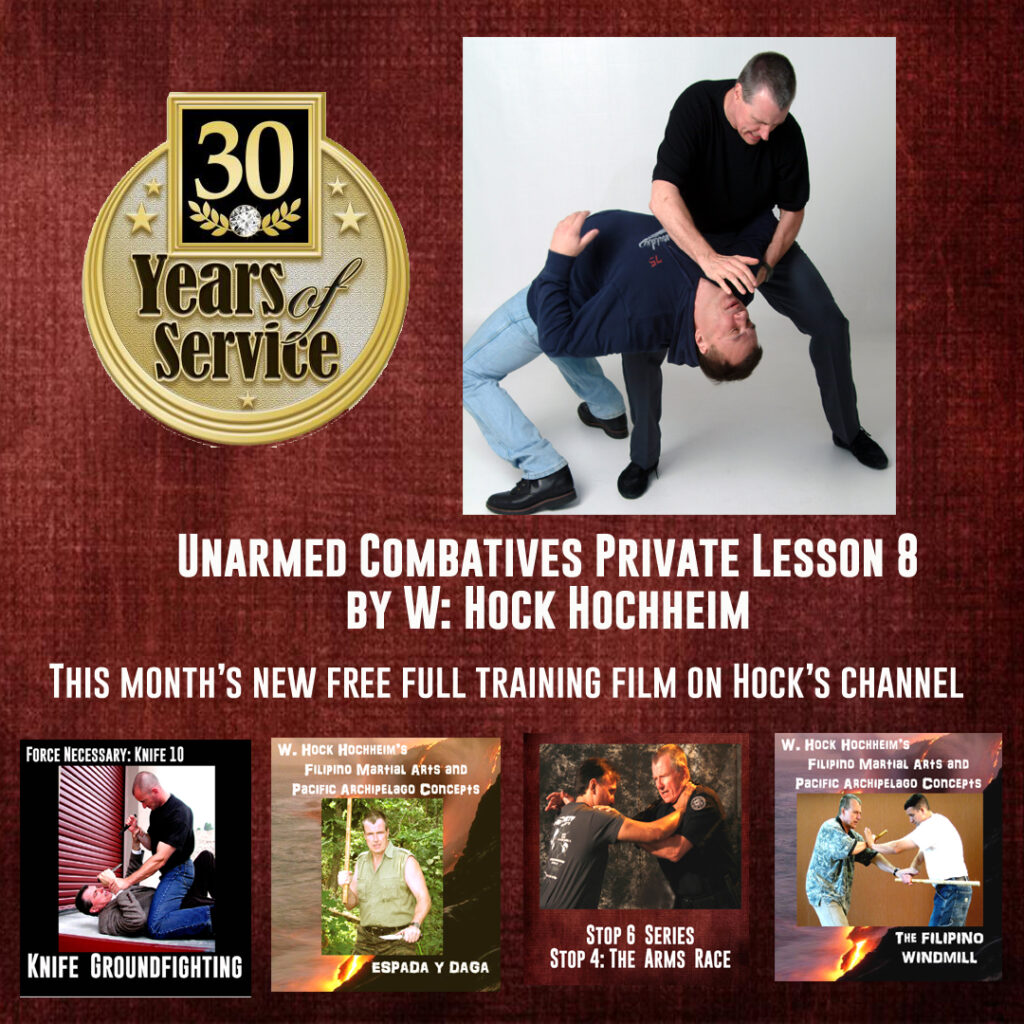
SIMPLE – FASTER – CAPABLE

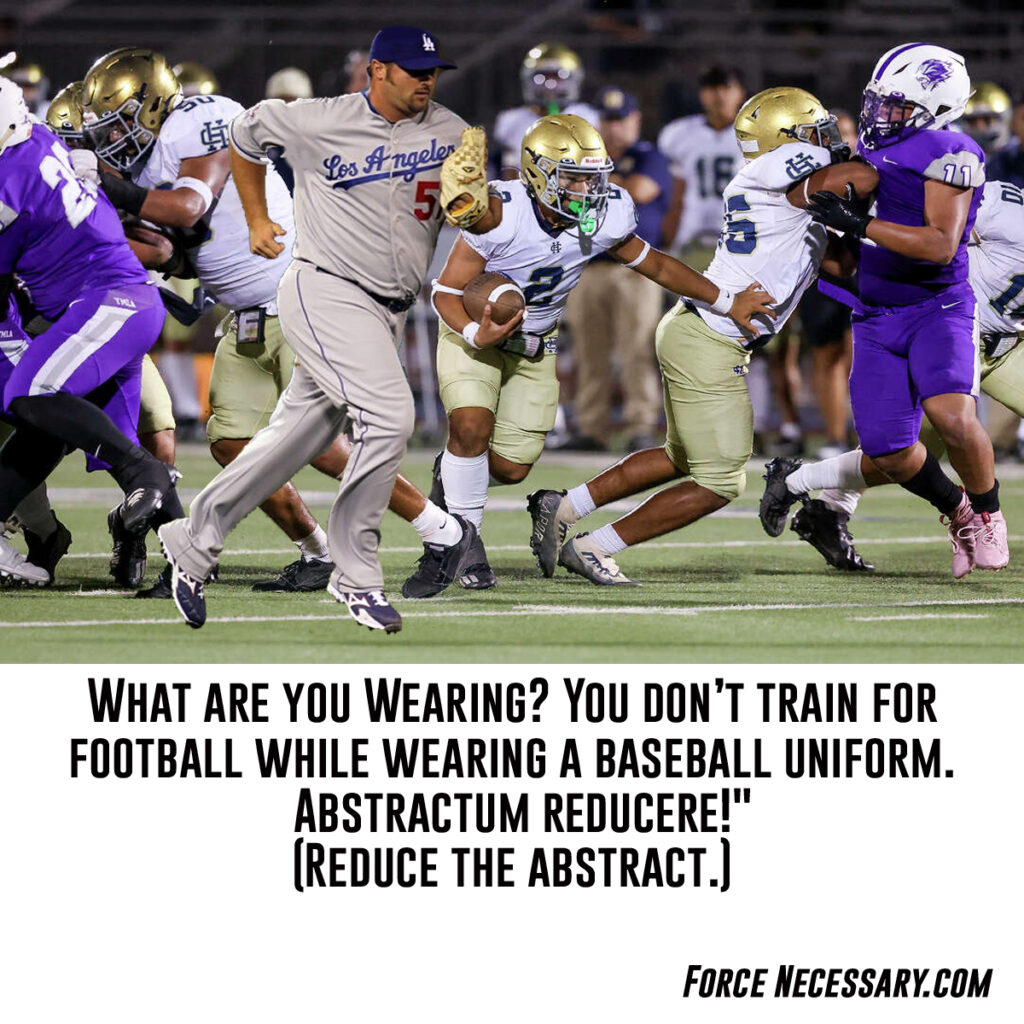
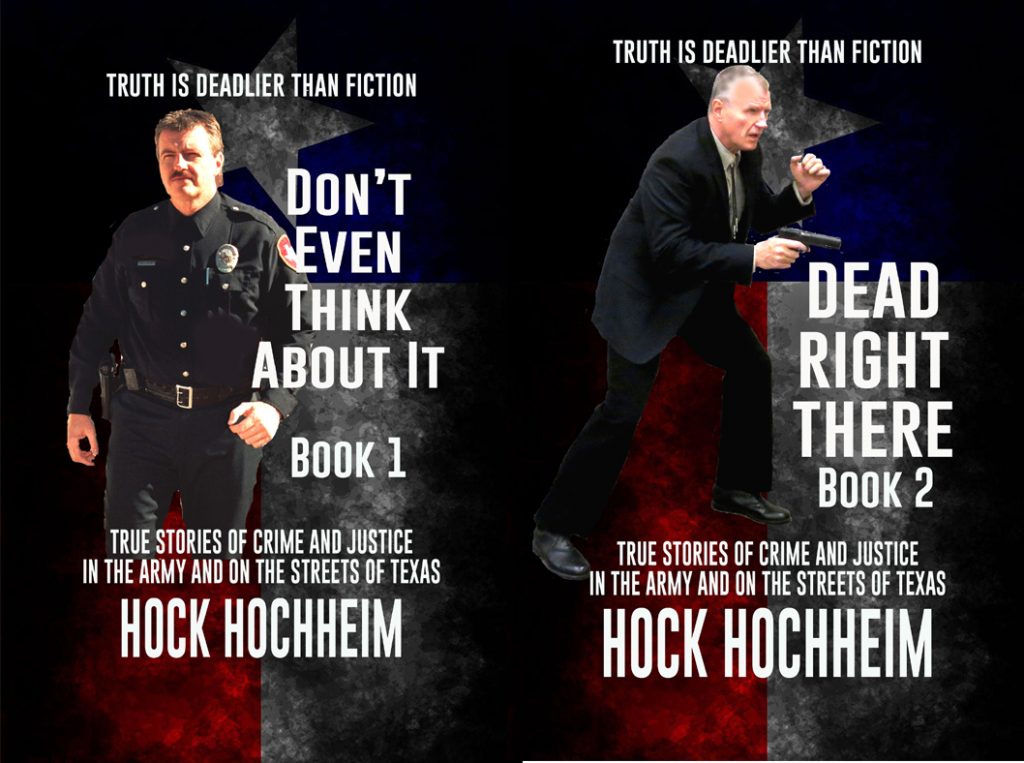
Can They Sue You? Can They Sue Each Other?
Assumption of Risk In Martial Arts Schools…
(The raw law on the “Assumption of Risk” has been a legal throwdown on many martial waivers. Is on mine. The standard is – “Assumption of risk is a legal doctrine that describes when someone chooses to participate in a risky activity and accepts the potential consequences. It’s a defense that can be used to reduce or bar a plaintiff’s ability to recover damages from a defendant. It’s a legal doctrine that describes when someone chooses to participate in a risky activity and accepts the potential consequences. It’s a defense that can be used to reduce or bar a plaintiff’s ability to recover damages from a defendant.” Of course, the legal system, ever prone to split hairs to the nth degree, shreds hairs into invisibility. -Hock)
Article by Attorney By Noah Nunberg
“Courts will apply the principle of “assumption of risk” in analyzing whether a persons involved in karate training are negligently liable in causing injury to others in supervising his students. This concept was well explained in the New York case of Beck v. Scimeca (Hwrang-Do Center), 90 N.Y.2d 471 (1997). The court explained that when a person engages in a sport or recreational activity, he consents to those commonly appreciated risks which are inherent in and arise out of the nature of the sport generally and flow from such participation.
For example, the court observed that one is legally deemed to accept responsibility to being hit by a ball in a baseball game or being bumped in a horse race. In each situation, the law will consider the degree of risks the plaintiff assumed when he elected to participate in the activity. The courts will not examine this in a vacuum. The assessment is made against the background of the skill and experience of the participant.
In Scimeca, a 30 year old orange belt student sued his instructor for compelling him to attempt a “jump roll” technique. There a 15 year old brown belt took over the class and directed the older orange belt, who had been training for 15 months, to jump over a high barrier. While the student had performed the technique before, the obstacle the student had to jump over was raised higher than he had previously attempted, and the student sustained severe spinal injuries in his failed attempt.
The court held that the student had assumed the risk of attempting such new techniques, which were calculated to advance his level of ability. The court examined whether the instructor created dangerous conditions which were over and above the usual dangers inherent in the martial arts class. The court also made clear that to assume the risk the participant must not only have knowledge of the injury causing activity, but also an appreciation of the risk involved. There, since the student had participated in this training technique before and he appreciated the inherent risks, there was no negligence.
The court distinguished other cases involving sparring activities, which appear to place a higher degree of responsibility upon the instructor. For example, in Deangelis v. Izzo, 192 A.D.2d 823 (3d Dep’t 1993), a beginning karate student sued the owner of the school as a result of sustaining a serious head injury while sparring with another beginner.
The court refused to dismiss the case based on assumption of risk there. The court noted that karate is not a commonly observed activity such as baseball or football and the dangers in karate are not at as apparent as they are with other common sports. Karate involves “specialized training” in order to make the punches, kicks and blocks effective. There, the new students had been trained in the punches and kicks, but not in blocking them.
Interestingly, the court observed correctly that placing beginners together to spar may be more dangerous than having the beginner spar with a more experienced opponent. The court found that since this fact in counterintuitive, it was not clear that the risks involved were “known, apparent or reasonably foreseeable . . . .” Therefore, the court refused to dismiss the action and held it for trial.”
Check out Hock’s TV chennel for many free one-hour training films. Click here
I first came to Texas from New York City on a motorcycle in 1972, ending a sort of “Then Came Bronson-Easy Rider” extended tour around the USA. One thing I did learn is that “I don’t need much stuff.” Comedian George Carlin did a comedy bit on this subject about people’s stuff, and making “smaller versions” of their stuff. As a result of such travel, I possess a concept, “Can I fit it on my chopper” mentality. This March 2025, I am moving in my new wife Sandy. This means clearing out my condo. All things big and small. I already gave away a lot of stuff after Jane died years ago. So now I will be moving very little. I look around my barren condo and still think, “Should I bother keeping this? Or that? Can I fit it on my chopper?” I am an unfrozen caveman. So for starters here, for my upcoming opinions, I am not a collector for collection sakes.
Who wouldn’t want to collect this nifty Johnny Cash knife thingy? Ahhh, me. I am not a knife or gun collector, no more than I would collect hammers, screwdrivers or wrenches. I just don’t care. You get the message – the “tool” message.
I guess this also comes from my Army and policing days. I am just interested in efficiency. Don’t misunderstand me, I like looking at your cool knives and guns – I will honestly admire them – I just don’t want them or need to own them. If you do collect these things, have a collectors’ mind, and you have the money and time for such a hobby, then if you are happy? I am happy.
The only time that my eyebrows are extra raised is when the lines between pretty and necessary-survival are blurred (and maybe bloody). One of these blurry problem areas is the texture of grips and handles. I always shake my head when I see collections of slick, baton-stick, knife handles and gun grip handles.
Speaking of bloody, Johnny Cash once wrote about the “kicking and the gouging and the mud and blood and the beer.” There’s also guts, water, oils, sweat, bad gloves and other substances that can make life very slippery and your hands and tools very slippery. Legend has it that the Gurkhas would dip their kukris in motor oil and then train with slimy, slippery grips. And what if your hands are injured and-or are freezing? Snake Blocker likes to stick practitioners hands into freezing water, then let them train with incapacitated hands, in his Apache Knife Course. You make things worse with pretty, shiny, slick handles.
I always shake my head when I see slick, metal knife handles and gun handles. A considerable amount of time, money and research has gone into making working tools like hammers, saws, screw drivers etc., very grip-able. But like wise tool-makers, many wise expandable baton, gun and knife makers and sellers have also researched and labored to make your weapons stay put in your hands with textured grips! People like to suggest that textured gloves solve some of these problem, but will you ALWAYS be wearing gloves? 24-7? Don’t take your gloves for granted in crime and war.
It’s bad enough when people have extra stupid hand-fingers on grips. Like this knucklehead for a major magazine using only 3 fingers on a handle to stab clothing, muscle mass and bone. This is mindless, leftover mimicry from some martial arts.
“I want my weapons to be tools and my tools to be weapons,” – Paul Howe
Deeeeep pockets! Some folks will suggest that a super-textured knife or pocket pistol handle might slow down weapon draws from pockets. Okay. Most knifes are clipped on pockets, but I guess some people do bury their knife in pockets. Small pocket pistols too? Okay. I guess you have to calculate the situational slick versus textured risks. There was a fad a few years back with car keys. The key itself was hidden inside a carrier and you pressed a button to eject the key, much like a switchblade operation. But if you hit the button while the device was in your pocket, the key shot out making the “draw” from your pocket cumbersome. I accidently did this several times with my car key and thought about this problem with some button release switchblades.
I am not endorsing anyone or anything here. I am just making a suggestion, forego pretty and slick, and get the most textured grips on your firearms, knives and sticks-batons. In my Force Necessary stick, knife and gun courses, in Level 1 of each, I emphasize and display the vital importance of grip-handle textures. (The issue of the SIZE of handles and grips is a whole other important essay.)
Can I fit it on my chopper? I don’t think cavemen used or bothered to collected fancy, slick weapons. And they probably used ALL their fingers when holding them. Get a damn handle on your handles!
“““`
Hock’s email is Hock@HocksCQC.com
Get Hock’s martial combatives books, click here.
One of the major influences in my martial life was Ray Medina. One of my best friends Roger White and brother cop (patrol and detectives), and Roger introduced me to Ray in 1986 because he knew my personal frustrations with classic martial arts, dating back to 1972.
Ray was already a karate-kickboxing champion fighter in our region but he’d discovered the Bruce Lee world, Dan Inosanto and Paul Vunak. Jeet June Do and Filipino martial arts, Thai, Shoot, Silat and that unique street fighting that Vunak pioneered in the 1980s. Ray was traveling back and forth to then the “Mecca” – Los Angeles for all this. And was addicted to seminars.
I “hired” Ray to teach me and basically several days a week for years we’d meet. At this point money was no object. Addiction is addiction. We’d meet up and I’d ask, “What are we doing today, Ray?” And it took a while to figure it out but basically we did what HE needed to work on, not me, which meant him beating me up quite a bit, under the guise of teaching me. BUT…I learned a lot. You can still learn a lot that way and of course I got to experiment on him too. I recall that Inosanto said that he did this with Bruce Lee, and Lee would wind up beating Dan up a lot. “Basically I was Bruce’s punching bag,” Inosanto said once.
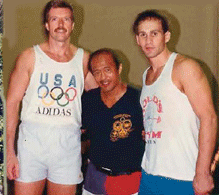
Ray and I started hosting the big names in our city. I began attending seminars with him and I quickly learned that we were both interested in visiting systems and arts, but only to learn how to beat them. We were like spies in ememy camps. Many if not most seminar (and class) attendees attend to learn those arts, embrace them, get rank, to eventually teach them. Early on I learned that our spy motive was to learn how to beat what every one else was doing, not replicate it, join it, or worship it.
True, we were both card-carrying martial addicts, but for Ray he was spying because of the fighter in him. For me, I was spying because I had to arrest people. So, we would study material with the sole purpose of beating it. Inadvertantly, we did learn other systems and arts but sort of, from this ass-backwards, spy way.
Ray eventually died of a stomach cancer. Through the years he knocked me out several times when kickboxing, but he also knocked some sense into me which was worth more that those occasional, nausea-LSD-like, TKO dreams and the occasional vomiting.
Check out all of Hock’s free training films on his TV channel, click here

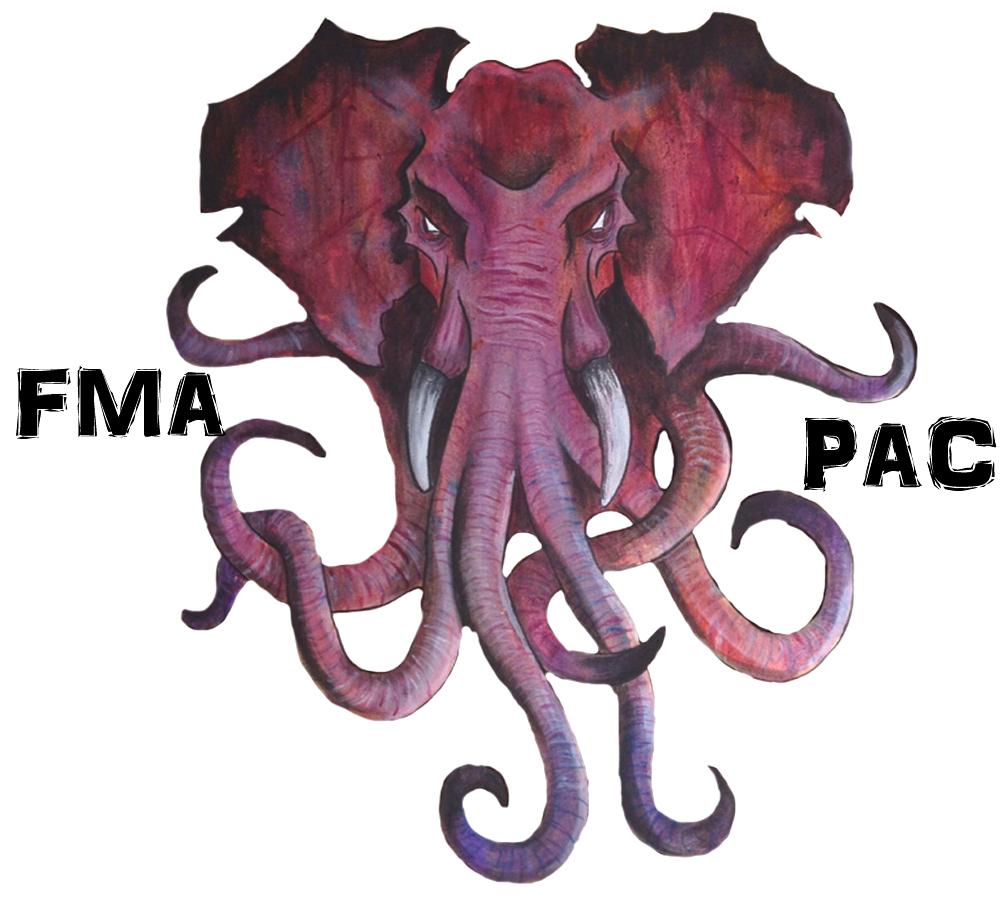


According to the American Heart Association, naturally lowering the temperature in this way decreases your risk of experiencing brain damage. It stops chemical reactions that can damage your organs when full oxygen flow resumes. Lowering your body temperature also helps regulate your heart rate and encourages steady breathing.
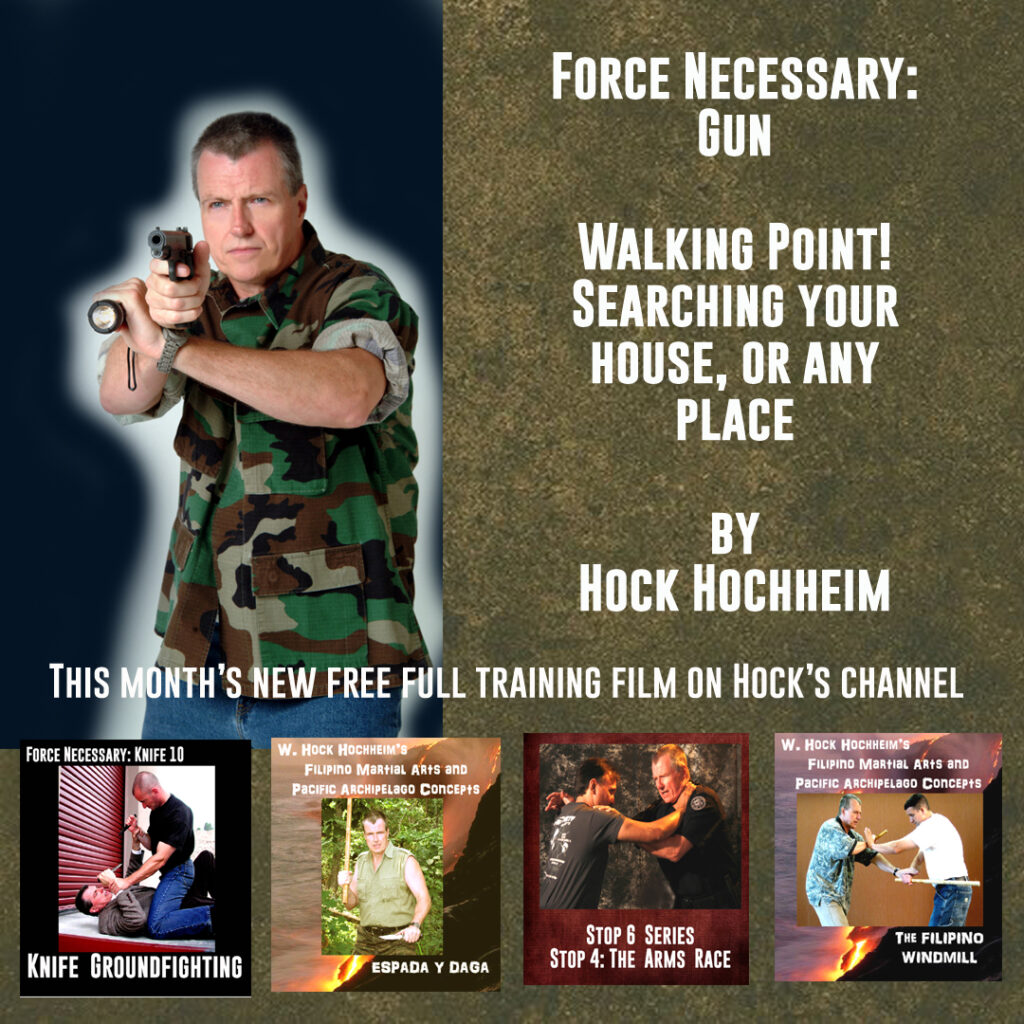
Since I organize the ‘Merica series seminars every March in the Royal Range in Nashville, which only covers “western” martial arts and systems, the topic comes up – “Okay Hock, how do you define that.” Which is what? And this question, answer and inspection has nothing to do with good or bad, better or best. Nothing. It’s just organizing.
I am not an outsider in this endeavor. Since 1972, I have spent years obsessing in karates-aiki jujitsu, Arnis, Jeet Kune Do, the multiple, Inosanto family systems, all to perhaps a distracting, unhealthy burden to normal life. I have more than poured over the words of Bruce Lee and Ed Parker. I know martial fads, addictions and histories. I have run my own Inosanto-like school in north Texas for years, battling the martial business world. I have traveled and taught seminars all over the world now for 30 years now, and I work with schools all over the world. Least of which I should add, all the non-stop, military and police training along the way (always geared for clean, generics and success, which I prefer.)
The simple, best fighting systems around the world are somewhat shared and then not shared at all – as methods can be obtained-evolved organically without the knowledge of each other. So, you’ll have someone in Japan doing the same thing as someone in Ireland because that something is just smart and good. Evolved in isolation. Devoid of shared culture. Distance counts.
You have to dig deeper to think western-eastern, to think of things geographically. One big filter I use for the ‘Merica seminars is hemispheres. In other words, Karate, Tae Kwon Do, Jujitsu, Muay Thai, Judo, Kung Fu, Silat, Israeli Krav Maga, Russian Systema, Filipino Arnis, and so forth did not, are not, do not originate in the western hemisphere. And in fact, they proudly market that very geography, flying the flags of foreign countries to help attract the “grass is always greener,” exotic advertising customers.
And just the perpetuation of eastern hemisphere martial arts migrating to the west, taught via eastern dogma-doctrine, replicating via eastern ways, does not make for a western martial art. If John Smith teaches Okinawan Karate in Omaha, Nebraska, that is not a western hemisphere martial art or system.
So the word – ‘Originate” comes into play. What originated where? In the western hemisphere? Shared or not shared? If shared, then how much of what? Some original, western hemisphere systems are combatives, or like Irish stick fighting, catch wrestling, Apache, Savate, HEMA sword and axe fighting, a way of boxing, a way of kick boxing. If you think about it, Bruce Lee even developed a healthy mix of Jeet Kune Do (JKD) on the west coast of the United States. He preached against isolated systems. Bruce mixed…
Speaking of Mixed Martial Arts (MMA) arts-systems purposely mixed by leaders, it has many decades of old history in the USA. Take for example Dan Inosantos’ approach. Been around “forever” and born in California and usually called mixed martial arts. But if you think about it, his approach is always singular, split, unblended, separate studies of each system. It was never really mixed-mixed and evolved (except for the JKD part). Each of the arts are taught separately as in their respected, doctrines-dogmas, even at times with their uniforms. His definition of MMA is diverse in systems, but not blended-mixed. It is much like John Smith teaching Okinawan Karate in Omaha, Nebraska. But in Dan’s case it is like several, separate systems from elsewhere, respected and keep alive. Despite the influence of Bruce Lee, the systems are not blended.
As an example of a blend-mix, Hawaii is actually located in the Western Hemisphere, as it lies to the west of the Prime Meridian, and Kajukenbo is a 4-art, very-blended-very mixed together, martial art. Way more blended than Hawaii’s Parker Kenpo.
A tricky one to categorize is Brazilian Jujitsu. “Originated” in the western hemisphere? Yes. It’s Brazil for heaven’s sake! But is it like John Smith in Omaha teaching classic karate? Many people joke that BJJ, really stands for “Basically Just Judo.” Now we all know BJJ is off the charts in their chess-like development over “basically just Judo,” with endless inventions and counters to the inventions. Chess, not checkers. But they dress, talk, eat, sleep and franchise like a martial art and we know their oriental roots. And so, I cannot invite BJJ into an ‘Merica seminar presentation. I am quite sure they don’t care one bit, and in most cities you can throw a rock and within that toss hit some sort of BJJ school. The fad-growth-addiction, not unlike Krav, has been incredible.
So far, I have used the ideas and words of “culture,” “origination,” blend,” “unblended,” “clothing,” “geographic,” “doctrine,” “dogma,” “hemispheres.” These are what I examine when I organize these ‘Merica seminars. It’s got nothing to do with good, bad, better, best. It’s just a theme, folks. I don’t care what you study as long as you know the big picture. If you’re happy? I’m happy for you.
Oh and hey! Godspeed for 2025.
****
Hock’s email is Hock@hockscqc.com
Check out tens of full hour, free training films on Hock’s Combatives TV channel… https://www.youtube.com/@hockscombativeschannel407/videos


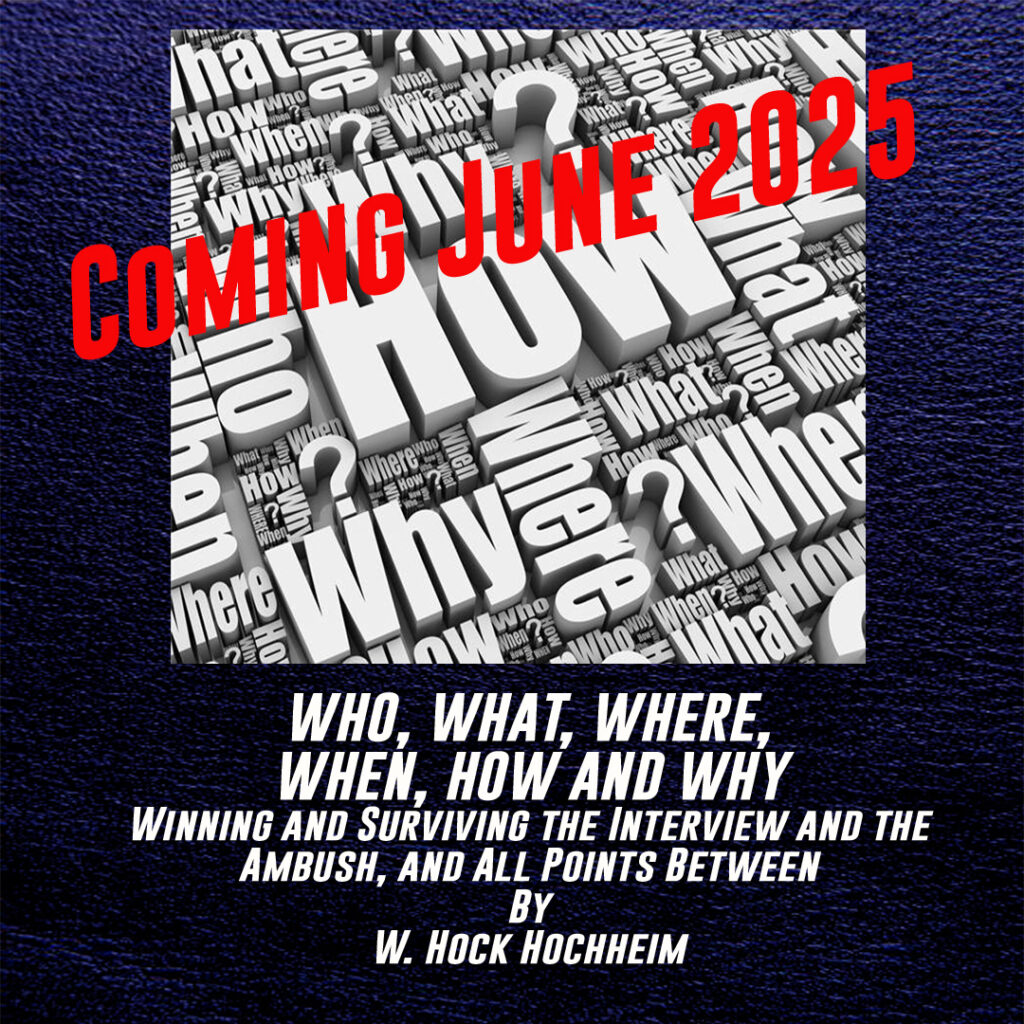
(In my upcoming book, as a result of the popularity of my Who, What, Where, When, How and Why lectures, this book will be published in mid-2025. In the Who segment I explore so many who topics. This is one – who do you REALLY think you will be fighting?- Hock)
WHO Question 2: WHO do you really think you will be fighting?
We’ve asked “who are you” in question one, and now with the duality mandate we must ask – who do you really think you will be fighting, given your geography, lifestyle, the times, crime and war trends? The quick answer in crime is usually someone you somehow know. But, not always! you must consistently read about and watch the news for crime trends and antisocial behaviors to pursue the idea of who you might be actually fighting, “friend” or foe? Usually none of this is covered in your local martial arts school or seminars, because they are busy being-doing their martial arts thing. They fight each other, virtually mirror images of themselves, other matching sports and arts people. In many cases there’s even film on how their competitors fight.
Some training programs foolishly treat every challenge as if the threat were a Nazi commando, plucking their eyeballs out, gutting their guts out, knocking them down and out and squashing their throat and face with multiple boot stomps. Unless you are in a war, this is excessive in so many situations, and you may well wind up in jail. Every hand, stick, knife and gun fight is a highly situational, drama and trauma, with consequences.
So, who do we fight? We list two general groups.
Enemies within 1: Friends and relatives, the “Drunk Uncle Conundrum:” A lot of family and friend violence goes unreported, but a lot is reported. It is very common in life to fight people that you know. Often you don’t wish to really hurt your drunk buddy or uncle-relative. This self-control is hard. I know because in police work we are also expected to “fight” but not really hurt people unless things get really “out-of-hand” and elongated and the situation really escalates in a mess.
I started out in Ed Parker’s Kenpo Karate in the early 1970s and Parker warned that when you have to fight a friend or relative, and you control yourself so as not to really hurt them, the fight lasts much longer. So true also in police work also. That’s a tough call, this control thing. But know this, poke your buddy’s eye out, bite off his ear, hammer-fist your uncle’s windpipe, smash his face, shatter your father-in-law’s knee, and then see what happens to you. Usually, often, that happening is you end up in jail and/or battling lawsuits. Money and problems, even if justified at first. Then there’s the revenge factor later, also covered here in a later segment of my book.
Remember technically, when a friend or relative… or someone… anyone…attacks you, an official crime begins and technically they (or you?) become…a category criminal. Then you could also just lump your aggravated uncle or spouse into the crime category should he take a poke at you, etc. The Drunk Uncle Conundrum is – do you report the crime? Does he? Or do you both just put ice on the bruise and go home? The family-and-friend situational nuisances dictate the temperature of your response. This is why a lot of family-and-friend violence goes unreported, unless there serious bodily damage? Call for an ambulance? Then usually the police get involved. Crime report or no crime report, you may well be fighting a friend or a relative over…who knows what!
Someone you know as elevated to criminal status. Angry friends. Angry relatives. Angry co-workers, business partners, Angry spouses. Sex and money problems. People that know people in these shapes, forms, or fashions and problems may percolate…
Speaking of knowing each other, there is a lot of domestic violence out there. The Department of Justice reports some annual generalities: “about 29% of women and 10% of men in the US
have experienced rape, physical violence, or stalking by a partner, which has adversely impacted their daily functioning. Nearly 15% of US women (14.8%), and 4% of men, have suffered injury due to intimate partner violence,
including rape, physical violence, and/or stalking.”
Annual global estimates from the United Nations Office on Drugs and Crime reports on total female intimate partner/family-related homicides: “Women and girls in all regions are affected by
killings. While Asia is the region with the largest absolute number of killings by far, Africa is the region with the highest level of violence relative to the size of its female population. The Americas (all of the western hemisphere) is next, followed by Europe and Oceania.”
Prison Legal News reports the headline: “Most murders committed by friends and family.” Psychology Today reports, “Therefore, the statistics appear to indicate that ‘the streets’ are likely far safer places for women and girls than their domestic environments.”
Study after study, year after year finds this all true. I consider working homicides as the “World Series of Police Work.” I have worked murders for many years and usually the common murder is frequently solvable because it takes some sort of friend, business, relative, money, sex, serious motive-anger to kill a person. This motive can usually be researched and uncovered. The great work of EMTs and emergency room crews can save a life, thwart a murder, turning the crime into an attempted murder or aggravated assault. The victim is alive to tell the tale. And importantly, we cannot view the problem of violence by just examining murders and attempted murders alone. Physical conflict is far more complicated and traverses all levels of crime.
Enemies within 2a: Criminals: Stranger on stranger. Someone you don’t know. Stranger-on-stranger crime is another kind of beast to solve. I’ve learned in many “Assault and Violent Death” schools I’ve attended, that stranger crime can be very scary. The USA Office of Justice reports: “Stranger-on-stranger crime is often considered more frightening than non-stranger crime because it creates a perception of randomness and lack of control, as the victim has no prior relationship with the perpetrator, making it seem like anyone could be a potential target at any time, regardless of their actions or precautions;
this fear is amplified by the unknown nature of the assailant and the inability to predict or prevent such an attack.”
As an investigator, stranger on stranger crime opens up a whole second set of motives that must be pursued.
Enemies Within 2b: Enemy soldiers: They are essentially strangers, but we kind of know who those people are. Generally. We know the “likes” of the enemy anyway, but they are literally individual strangers to us. We meet them years later after the war and we become fast friends. Oh, the irony.
But, temporary enemies are often just that – temporary enemies. In war, since the history of man, we usually choose to kill them from as far away as possible, impersonal, but we often can’t keep that distance and things get face-to-face, facial expression-to-facial expression, blood spatter, up-close and personal.
Fighting is situational. Civil law, criminal law and even the Geneva Convention, as well as human morality-ethics, all look at fighting these two groups differently. Our responses in every fight, every battle are very situational. But, this is who…we…fight.
*********
Hock’s email is Hock@HocksCQC.com
My book will cover many Q and A topics within the who, what, where, when, how and why of it all. Coming in mid-2025…
(The elephant head in the photo is not real. I would never shoot an elephant nor would I advocate such a thing. That is not a tattoo on my arm, but the arm of one of our practitioners. Another one has the tattoo on his calf.)
I have used the elephant as a logo-symbol so to speak for 30 years, for the reasons I list here. You always read on the interwebs about people claiming “people have asked me…” For most “experts,” no they haven’t. That line is just an excuse to pontificate on a topic, pretending to be a sought after expert. But in this case, actually, honestly a few folks will always ask, “Hock, why an elephant?” after seeing it for 30 years on my shirts, certificates, patches and later on my webpages.
First off the elephant has a insider, tribal meaning. Veteran insiders in the military, police and hunting worlds have long used the expression when talking about experienced operators. Also “experiencing” elephants have been used in religions and philosophies.
”Work with him! He’s seen the elephant,”
or…
“Train with him, he’s seen the elephant.”
or…
“Hunt with THAT elephant hunter. He has seen (and shot) the elephant. He knows where the elephant is. He knows the elephant.”
or…
“The elephant never forgets.”
Professor Google says about seeing, or seen the elephant…”In 19th-century America, (some say the 1830s) “seeing the elephant” referred to the experience of witnessing something extraordinary or momentous. It was a metaphor for gaining a new perspective or experiencing something that was previously unknown.:
Leave it to Americas to lay claim to the expression. We have long heard, centuries in fact, that traveling hunters in Africa, seeking to shoot elephants, were told to find veteran hunters who had “seen the elephant.” They know them, where they are, what they do and can lead the hunt.
It is true that term that has been used in North America for cross-country wagon train survivors, and for 1860s American Civil War survivors. In fact through time, you hear the terms with war survivors of many conflicts in general.
But the 1830s? What about the classic tale from India of blind men touching the elephant. The Indian parable of The Blind Men and the Elephant dates back to around 500 B.C., appearing in the Buddhist text Tittha Sutta. The story has been adapted in many forms and is part of many religious traditions, including Hindu, Jain, and Buddhist texts. Perhaps the idea of the 1830s origin comes from the American poet John Godfrey Saxe (1816-1887) who re-told and popularized the story in his poem, The Blind Men and the Elephant. It basically goes like this…
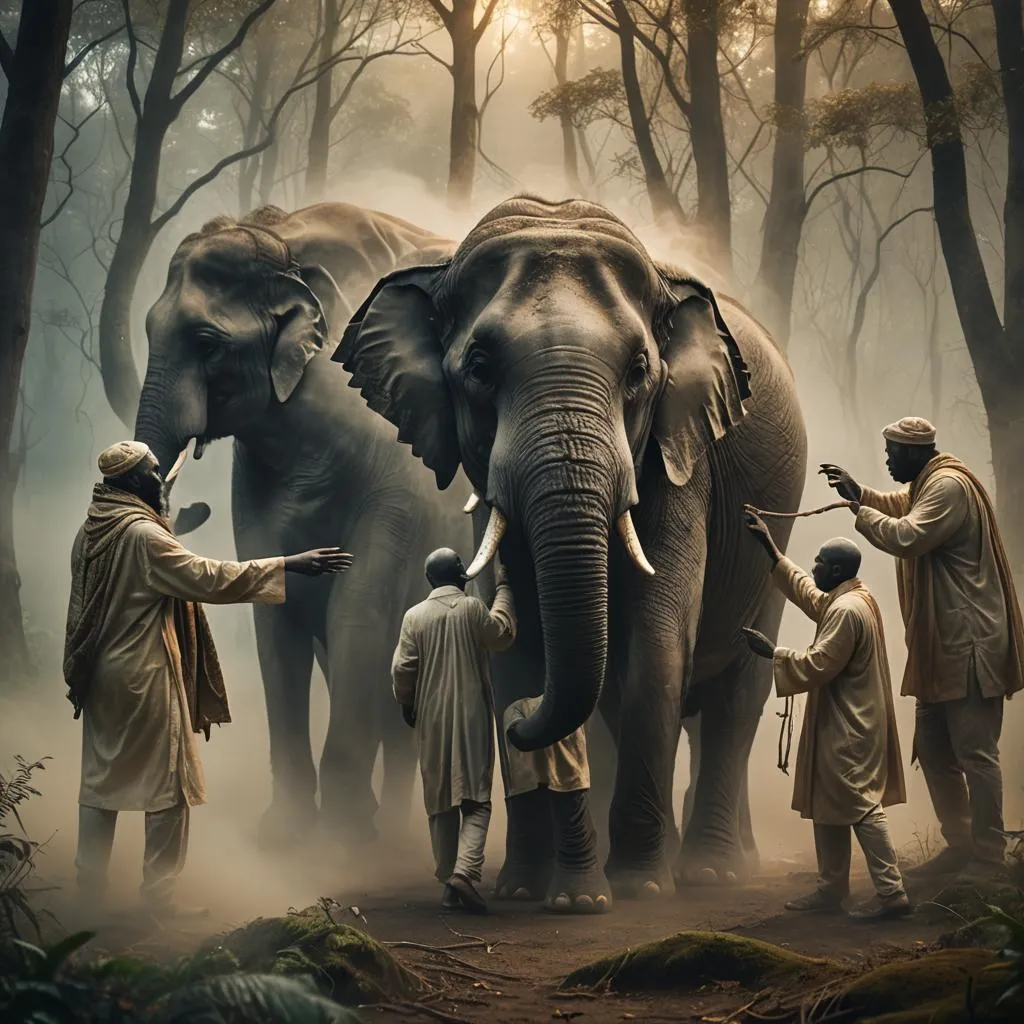
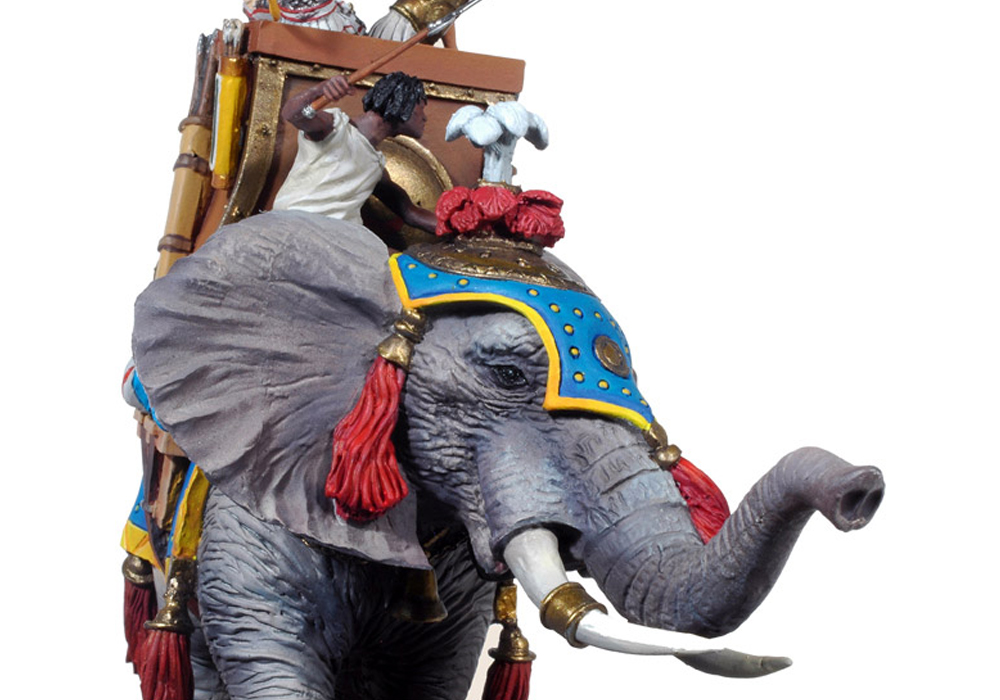
“If you want to be a forecaster, you would do well to base your forecasts on the actual experiences of real people whose been in situations you are only imagining, and the more informative their experience will be, of course “ – David Gilbert, Professor of Psychology, Harvard University author and lecturer.
Forecasting. Trainers forecast problems and work to solve them. The elephant symbol and expression has come to represent real action and real experience. If you can’t live it, then train with the people who have….kind of thing. get close, closer. The training mission is to collect this type of information, dissect, rationalize and create solutions .
And…that is why I selected the elephant as the Close Quarter Concepts emblem. We try to be a repository for as much of this type of information as possible. I am a vet, our books have true stories from all kinds of vets, these Force Necessary web pages do, etc. It is a never-ending, and ever-changing process, like education, of course. Skills are perishable, BUT, the best “elephant never forgets!” (oh, they do, but the origin of the phrase goes back to observations that elephants follow the same paths and even hand down genetic memories of directions and places-grounds across generations.)
And now I leave you with The Indian parable of The Blind Men and the Elephant
I.
It was six men of Indostan
To learning much inclined,
Who went to see the Elephant
(Though all of them were blind),
That each by observation
Might satisfy his mind.
II.
The First approached the Elephant,
And happening to fall
Against his broad and sturdy side,
At once began to bawl:
“God bless me! — but the Elephant
Is very like a wall!”
III.
The Second, feeling of the tusk,
Cried: “Ho! — what have we here
So very round and smooth and sharp?
To me ‘t is mighty clear
This wonder of an Elephant
Is very like a spear!”
IV.
The Third approached the animal,
And happening to take
The squirming trunk within his hands,
Thus boldly up and spake:
“I see,” quoth he, “the Elephant
Is very like a snake!”
V.
The Fourth reached out his eager hand,
And felt about the knee.
“What most this wondrous beast is like
Is mighty plain,” quoth he;
“‘T is clear enough the Elephant
Is very like a tree!”
VI.
The Fifth, who chanced to touch the ear,
Said: “E’en the blindest man
Can tell what this resembles most;
Deny the fact who can,
This marvel of an Elephant
Is very like a fan!”
VII.
The Sixth no sooner had begun
About the beast to grope,
Than, seizing on the swinging tail
That fell within his scope,
“I see,” quoth he, “the Elephant
Is very like a rope!”
VIII.
And so these men of Indostan
Disputed loud and long,
Each in his own opinion
Exceeding stiff and strong,
Though each was partly in the right,
And all were in the wrong.
MORAL.
So, oft in theologic wars
The disputants, I ween,
Rail on in utter ignorance
Of what each other mean,
And prate about an Elephant
Not one of them has seen!
Reach Hock at Hock@HocksCQC.com
Get Hock’s Texas Detective Trilogy, the cases of Jumpin’ Jack Kellog, click here.
A string! One great fake that opens a hole, then one stunning blow, then a tree-step combination…for starters. 5 parts of the string. 1 plus 1, plus 3.
What is string theory in simple “math” terms? Professor Google says: “Instead of treating subatomic particles as the fundamental building blocks of matter, string theory says that everything is made of unbelievably tiny strings, whose vibrations produce effects…” We here are not galactic physicists. We are knuckle draggers, trying to survive crime and war. Maybe win some trophies is the end game for some? I nickname small practice sets – “string theories.” Parts strung together. They are combat scenario preps, and we all do them but I would like here to interject the fake in as starters and some scientific ways to train them.
Tiny strings. The late, great Remy Presas said so many l times, “All you need you know, is one good fake.” He was speaking of a theory, a battle plan idea. Because we all know “all you need” in martial life is a whole lot more. Call the fake a “set-up” or whatever you please. The concept, this strategy is in all combat sports, and in many non-combat sports. For example in boxing – ” A mock blow or attack on or toward one part in order to distract attention from the point one really intends to attack. “The boxer made a feint with his right, then followed with a left hook.”
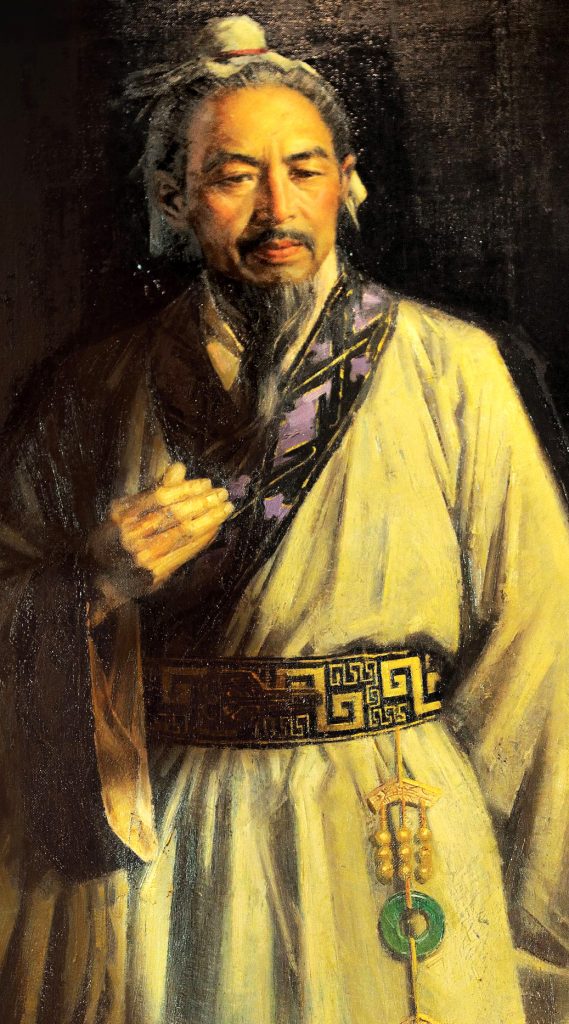
But a fake and follow-up string is especially important for self-defenders, a real priority to emphasize since they are not in the sports “duel,” the sports “spar,” the sports “grind” of controlled sports for as long as sports people are.
Think about it, a good fake is important. Good fakes…open things up. “How ‘sporty’ is your fake?” Trained fighters might see them coming and be susceptible to the real delivery steps. But, the ignorant untrained eye won’t see them coming. And I must ask, “How fast is your fake?” If your opponent is slow, a fast fake won’t get the reaction you seek, that opening . You must fake slower.
Brace yourself, fakes or no fakes, to be really thorough, first off you have to learn and improve these “first-line” physical events.
Yikes, that’s a lot of stuff! Folks can’t all be super experts in all these areas. Folks can’t all be martial full-timers, yet he path of study leads through this long way. Certainly, an expert and a serious instructor must know these things, but people with busy “lives,” all of which are 99.5% part timers, (almost all normal people with jobs, families, etc.) not full timers. But they can be taught these 3, 4, 5-part strings of combatives-self-defense early on which can be helpful. A breakdown…
1-The confrontation. The who, what, where, when, how and why a crime, a battle, or a fight started. Study the intelligence info of fights, crime and war. What are the opening ways of fights, war and crime? Why did you go there? Why are staying there. This essay is not about these “stay alert” topics – which would be a whole book but must at very least be mentioned here as number 1.
2-All basic strikes. Includes hand, stick, knife! The strike alone, in an already open path, needs no fake. But opponent reflex matters. Happens. What naturally, statistically pops open when the enemy ducks, blocks or dodges your incoming strike? In training, you can also turn a whole series in your hand strike training into a 2-step practice, even with every kick. Then a whole series on reverse, as in fake kick and go to hands. Two steps in the string right there that must be formalized as a set of practice.
3-All basic kicks. The kick alone, in an already open path, needs no fake. But opponent reflex matters. Happens. What naturally, statistically pops open when the enemy ducks, blocks or dodges an incoming kick? In kicking, a very common tactic is to hand-fake high then kick low. In training, you can turn a whole series in your kicking training into this 2-step practice, making a higher hand fake part of every kick. Then a whole series on reverse. Fake kick and hand strike. Two steps of the string right there, that must be formalized as a set of practice.
4-All basic grabs. In takedowns-throws, what are the first, basic grabs on the body that set up one up. What needs to be open for such grabs? What strikes. kicks and fake grabs open the takedown throw-grab you are hoping for? In ground captures what are the first, basic grabs on the body that set up one up. What needs to be open for the grabs? What strikes and fake grabs open the grab you are hoping for? Can’t strike in your sport? Fake grabs then. What moves can set up your selected grab? (I have a whole other long essay on grabs and fake grabs and set-up grabs.)
5- Body movements, footworks and maneuvers. Where do we need to be to fake, and be in each part of the string to best execute? Standing or ground?
6-Combinations finishers. I myself believe in 2 or 3 step combinations. At least as a foundational, study method. It might take 5 or 6 things to finish a stunned opponent, in which case, I would like to package them in as yet another 3-part combination. That is just my training strategy. Long steps, 4 or more ideas in the string don’t seem to be accomplished as planned. The opponent moves, blocks, falls, etc. changing the range and breaking the long dance.
Hand fighting, stick fighting, knife fighting, gun fighting. Sports. Arts. The art of deception. String things along for training. String Theory.
One hand example?
What series should you build against knife attacks, you armed or not armed? Sticks? Versus weapon quickdraws? I teach these hand, stick, knife (and gun concerning draw points) string lists, in an inspiration that eventually customize your own.
Yes, if you want to you turn these 5-part strings into katas. Yes. Many do. Go ahead. Katas and visualization-theory are not near the top of my list. I’d rather use and suggest gear, mook jong dummies, heavy bags, and of course the best – partners, but whatever. Doing something is better than nothing.
In sports you are filmed, and the opponents watch your favorite strings to prep. And,-or, you watch their favorite strings on films. In crime and war? Maybe not so much is available, but some things can be gleaned.
String Theory in fighting, Not too complicated! As the Rolling Stones said, “She was practiced at the art of deception. Well, I could tell by her blood-stained hands. You can’t always get what you want, But if you try sometimes well, you might find, you get what you need.”
Check out Hock free full one hour training films on his TV channel. Click here
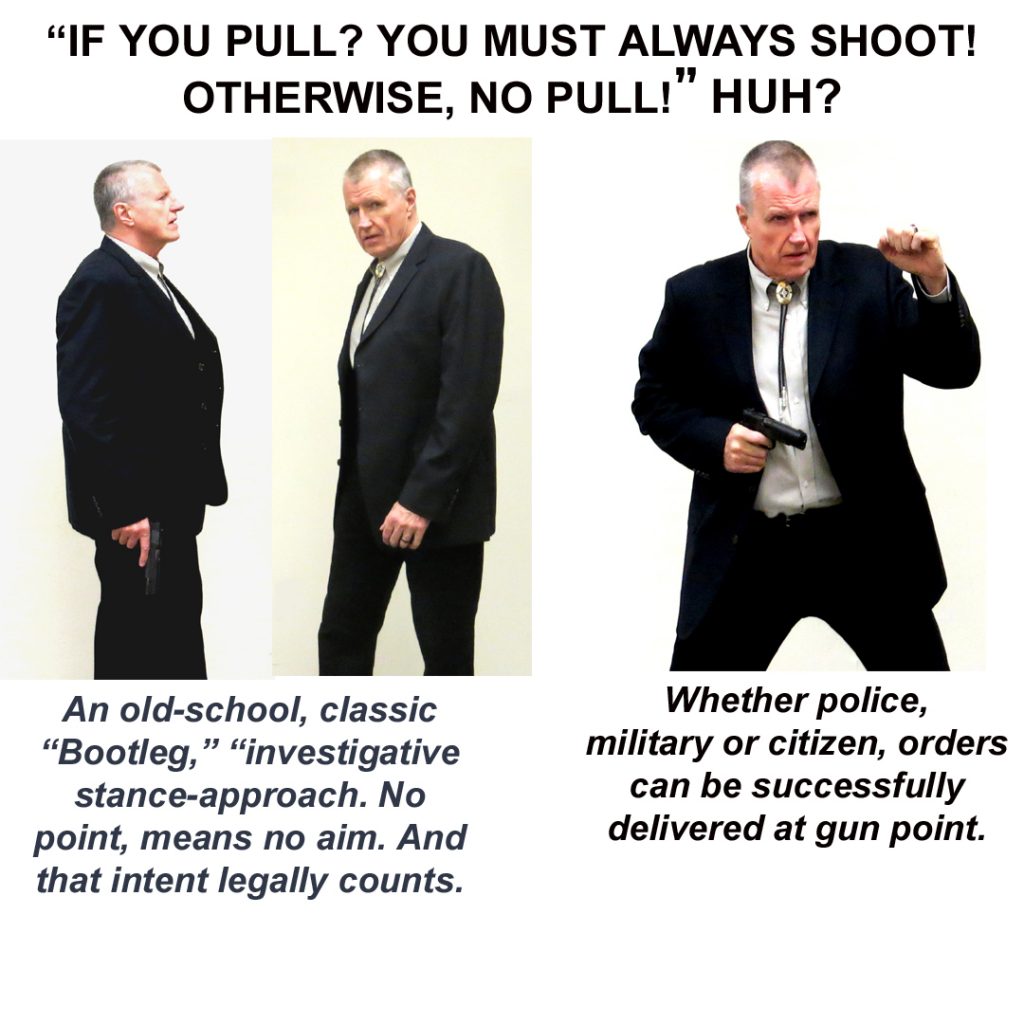
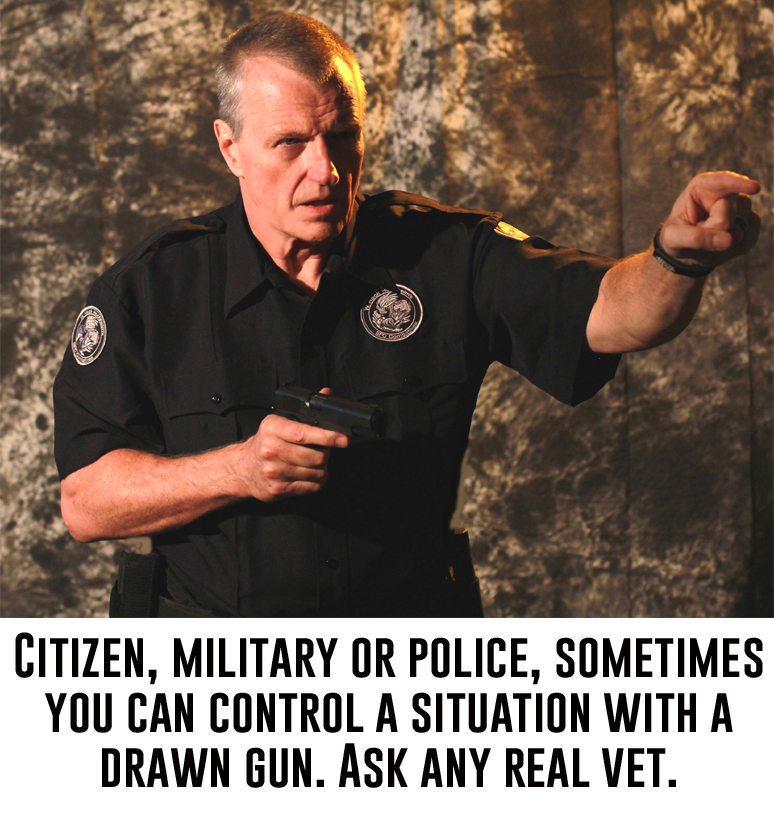
Check out the Training Mission Books, which cover gun combatives. Click right here.
Or…How To, or How NOT To, Maintain a Popular Knife Course
Through time, the who, what, where, when, how and why, my original, once quite popular, Force Necessary: Knife combatives course “fell down,” “fell away” from pop culture. While I still get to teach it around the world, it has slipped way below the pop radar in lieu of other pop programs and my business mistakes. So, when did I take the fall? It happened slowly and then one day you are down looking up.
You see, the “new kids on the block” don’t know that before the fall, I once was “somebody.” In the 1990s I was part of a resurgence, a re-look, a re-examination of older knife material (which essentially was mostly a lot of knife dueling, and much of that based on swords). Things needed evolving. Things needed converging into performance coaching, modern law and rules of engagement.
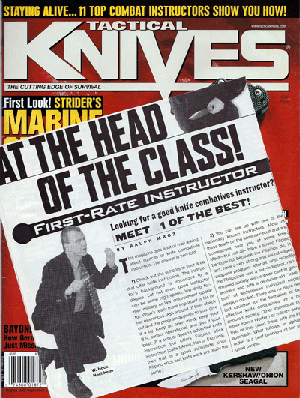
Studying and teaching “knife,” for 30 years comes with its own inherent, stigma problems and limited interest, we all struggle with. The knife world is also very small. So small, one might ask, “Why bother?” Why not just sell Italian shoes? What is this knife world? Who then prioritizes the knife and in what ways? My thoughts –
From a business perspective, these groups are the ones you knife folks need to advertise with. Good luck finding them all. Customer acquisition! As a teacher-practitioner, I am mostly in the above “worriers group,” dismissing anything fancy or artsy. When you worry, you worry about before, during and after the attack. None of this is a hobby for me and I don’t do cartwheels over various looking knifes, no more than I would if I examined hammers or saws. They are just tools. Your knife is nothing but a tool. But, the above 3 groups are the knife world we live in. What were my and other ‘s business mistakes?
Business Problem 1: The Knife Business is a Stigmata. I mean to say that studying knife fighting was and is still not at all popular. It might be a origin mistake to bother trying. A very rare few are “doing” it. Once teaching and learning, I don’t like many terms, images, messages, logos, etc. relating to the negative stigmas surrounding knife fighting, A rebel, thug, skull etc. persona.
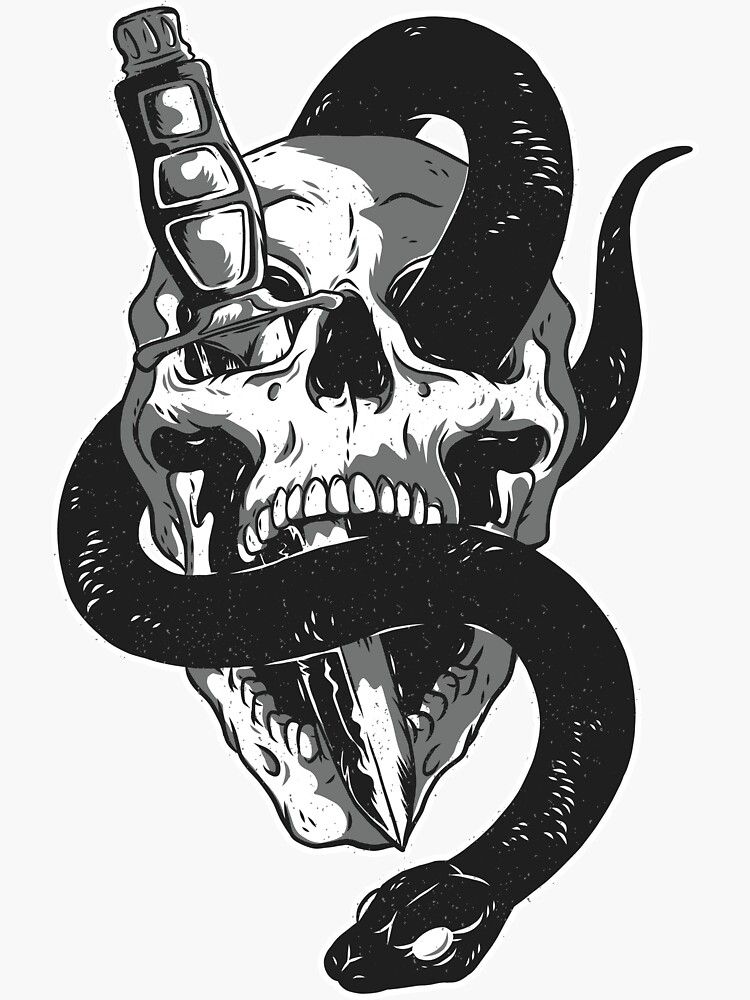
These realities are not too popular for the “new kids” that want to appear a bit rebellious? Learn and-or teach slicing, dicing and gutting people with a knife, void of situations and the law. This marketing can be naïve, reckless and immature, incomplete and a ticking, legal time bomb for you. All the legal prosecution needs to do is show a jury a few of these system names (course names and knife names are so, so important) photographs, logos, teachers and characters and you the associated user, become jailbait. I say stupid, but still they are “money smart,” and more popular and sought after than me. By the grace of God they go…until…they have to use that knife. Mature survival is surviving-enduring before, during and after a violent event. The end game – as in the legal aftermath, is a big part of a well-thought-out, course.
Various ultra-violent, “skully” death messaging should be reserved as a primer mentality for very serious, military, combat groups. THEIR war psychology. Their war prep. Their war world. Not cops and certainly not every day, walk-around citizens. Mimicking them makes you look like a wannabe punk. Look at the lawsuits filed on cops and citizens – go ahead – have a little death-engraved-logo on your gun (or knife) and see what happens when you shoot someone. Have a patch or tattoo of a grim reaper with a knife, or a skull with a knife through it, and see what happens when you have to legally use a knife. We the police, the prosecutors search your history. Take this idiot for example – I read one New York City, very popular, international knife “cartel-liberty” group headline atop a Facebook page:
“I love it when I carve someone’s balls off and put them in his empty eye sockets.”
Shit man, you think you’re Rambo? You probably work in a fucking supermarket. And you think and talk like this? You need to be on watch list. Fantasy jerk-offs like this give us all a bad name. But images and expressions like this, or near like this, this mystique, does attract a certain sick customer, usually young, or young in the brains anyway. (By the way, after my public complaints and comments on this guy, this must have reached the then Colorado headquarters and this sick-moron took that line down.)
Stigmata-wise, many still call knife training, “knife fighting,” but I don’t like that term, even you are still indeed, fighting with a knife.
Business Problem 2: Failing to Emphasize the Knife Enough. I escaped all existing systems by 1997. Just quit. I had-have a dream! I seek to produce the seamless hand, stick, knife and gun fighter, standing through ground. You do what you got to do, with what you got, where you are. So, this halfway means I do not over-emphasize a knife course or any single course. While I was once in the 1990s and 2000s well known in our small world “for the knife,” I am not now, which puts me behind the knife marketeers. I have built four great, competent individual, non-sport, survival courses which I blend. I can clearly debate ANYONE on course doctrine points. Each course stands a lone, but shooting for the big hand, stick, knife and gun fused end-user, final product has cost me in the knife marketing “ground.”
Business Problem 3: Being too Independent. Another business problem for me? No “flags.” I have no crutch system, no flag to fly, like Pekiti, JKD, Brazil-Mania, Krav-mania. Silat. Arnis. Bruce Lee. UFC. No uniforms. No 12 knives on a vest. No tribal brotherhoods. It’s just little ol’ me flapping in the wind about the knife. I can’t attract these extraneous-system-people, capture super search martial arts terms, as some of those attached are obligated to attend. Despite my avoidance, we business-mature know the established advertising fact the “the grass is always greener on the other….” side of the street? Other country? The sewers of Spain. The temples of Thailand. The monasteries of China? The borders of Israel…the…and so on. Me? My mistake is I appear to be just a bland, white boy with some info. I don’t even have any tattoos!
Business Problem 4: Rise of the Replicators. Of course, with all businesses, this 1990s and 2000 knife movement kicked off a new interest and a fair number of new knife courses popped up often by less experienced, less organized people, and in my opinion doing less comprehensive programs. But this business evolution is to be expected. Invent a new “widget?” There’s a knock-off widget. Then knock-offs with an “S.” In the big picture of training and education however, not widgets, this can be a positive thing. Awareness. Curiosity. Growth. Evolution. And then sometimes no growth. Still, the old often helps the new. The “standing on the shoulders” thing.
Some 25-odd years later, in about 2015, on a popular public forum someone asked me what I thought of Johnny Swift’s new, knife, quick-draw article in an internet magazine. Of course, it wasn’t called knife quick draws. It was named something super-spiffy like “Armageddon Instrument Production,” but it’s just knife quick draws. It was declared brand-new, Biblical-worthy advice Swift preached, and published in the new amazing world of web-jargon magazines called like “Organic Micro Evolution of Edged Prophetic Dynasty.” (I really just made that magazine name up, but how far am I off? You remember that recent trend of densely tech-naming courses and articles? Weren’t you impressed, or can you see right through the disgusting, abject pretentiousness? Twenty and 30 year-olds salivated with these techno titles though! But thank goodness that trend has been dissolving. In this case, it’s really just “stress quickdraws.” It’s not “Rapid Production of Edged Antiphon.” or other poorly veiled, douchebaggery.
Anyway as requested, I read Swift’s ground-breaking, testament as featured in “Retrograde, Skill Supremacy, Elite Magazine” and I replied on the public forum –
“Oh, I have to like Swift’s article. It is virtually, word-for-word,
from my 1995, Knife Level 1 quick draw outline.”
“WHAAAAT” said the young world? My review/remark caused a lot of guffaws and a few smart ass remarks, among the 20 and 30 year old readers, most of whom were so submerged in modern “dynasty jargon,” up to their fad-beards in mystique, and lost in the web world. They’d never even heard of us older guys from the 1990s and 2000s. I mean, who am I to comment like this on their latest fad-boy genius? I added that I was not suggesting that Johnny Swift plagiarized my outline, as it might have innocently been co-opted, or the older info has become so, ever so embedded into the “knife world” it was deemed as open knowledge. Or it was invented, like language, in isolation. I get that. Sure. That happens. (That level 1 knife outline is/was free to the public and has been distributed for literally 3 decades now, and my knife book – declared as the best knife book ever – has been for sale since the 2010s.)
One guy was clever enough to say, “Well, sorry I missed you when I was 5 years old.” Ha! I told him that really was a pretty damn, clever, funny retort. It was really. But missed me? Dude, I never left. However, actually, he never knew I was around to begin with. That is part of…the “fall.” I added in that discussion with Mr. Wise-asses that the spread of education was a good thing, and I probably partook in that process. I reminded the “guffawers” that I participated. I said that the old helps the new. As a great gun instructor Dave Spaulding likes to remind us, “It’s not new. It’s just new to you.”
I also frequently read these days, what is considered catchy and new terms, ideas and expressions that I already published and advertised decades ago. For just one example – a newer knife course (populated by death skeletons and skulls and counter-culture) uses the working-man-world word terms of “Journeyman,” “expert,” etc. Tradesman titles, etc I used first in the 1990s.
Contemplating these copycat things, I consider this list:
But anyway, inside a comprehensive knife course should be:
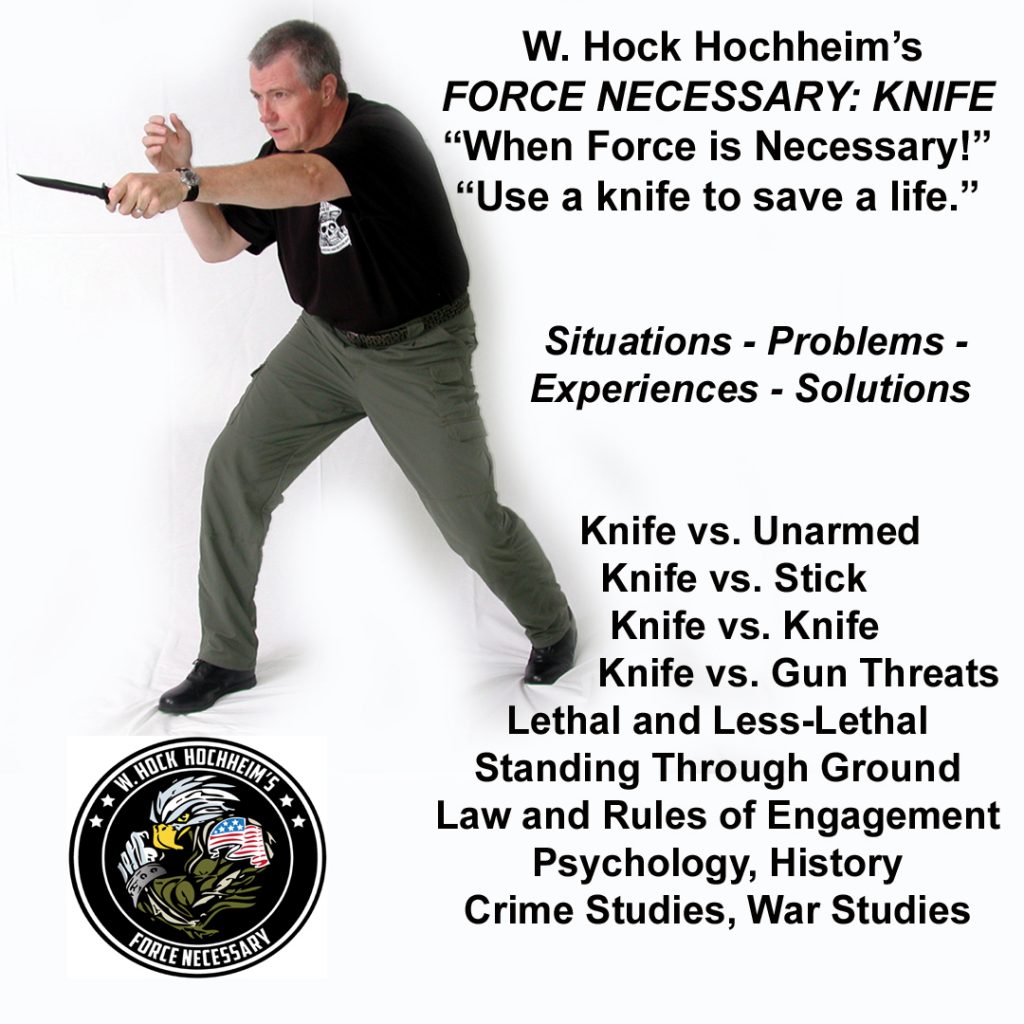
Just a few of us were those innovator pioneers and helped turn some tides in the 1990s and 2000s into what it all has become today, for better or for worse. Maybe you young fellers will learn from my mistakes? Establish new standards? Flesh out topics?
It’s always good to mention and/or thank your prior teachers once in a while. I always do. But, before you young knife guys make any sarcastic jokes about me and the few other 1990s guys again, keep in mind…your modern instructors might have, probably has, “peeked” at all my and our, long established materials. Some will not confess to it. Or, our materials have become such standard, general knife doctrine that these younger guys don’t even know of us. But, guess what? I might just be your long-lost grandfather.
————————————————————-
Hock’s email is Hock@survivalcentrix.com
Get what is still called by so many, the greatest knife book ever, 1000s of how-to photos in the topics above, click right here. (Now in a big second updated edition.)
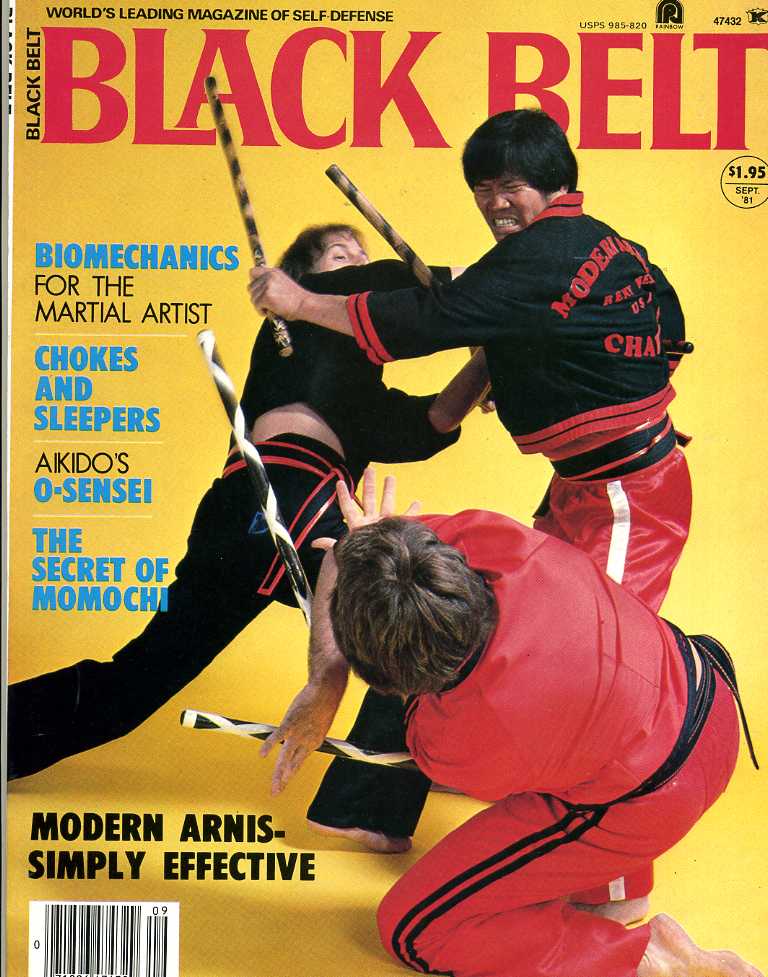
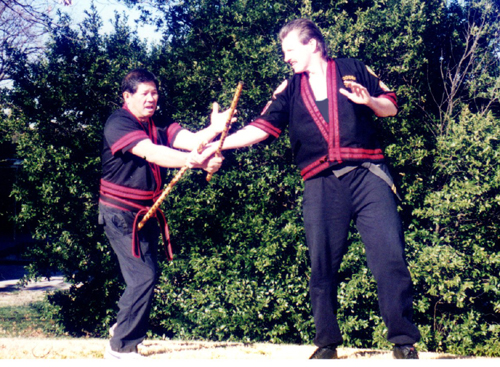
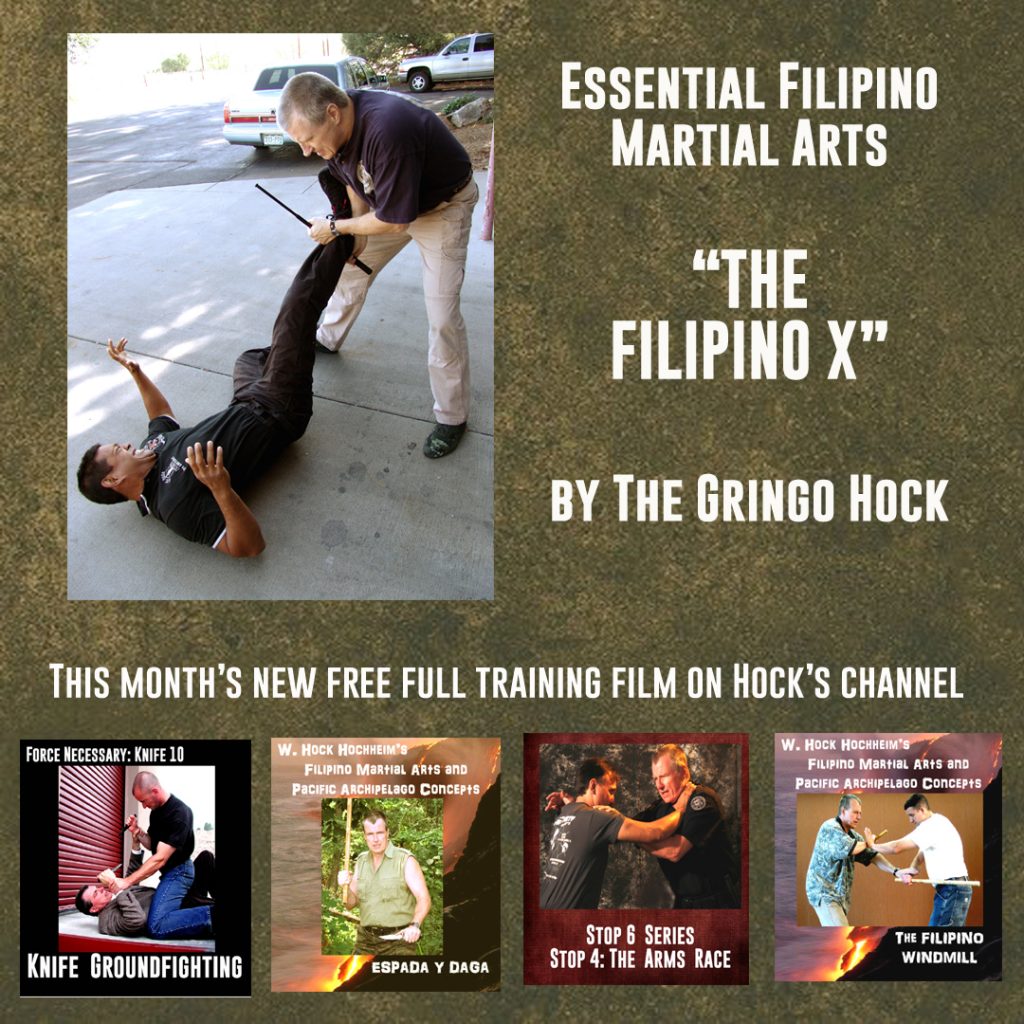
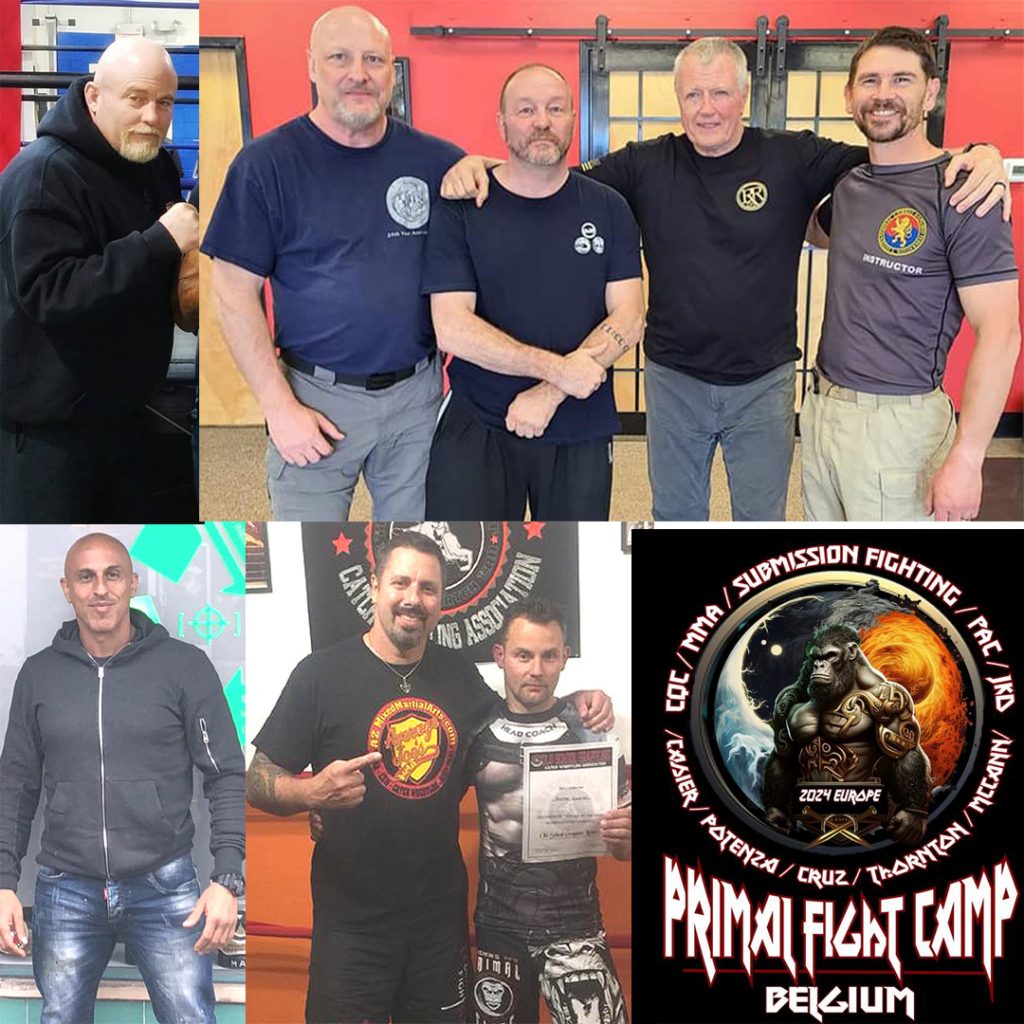
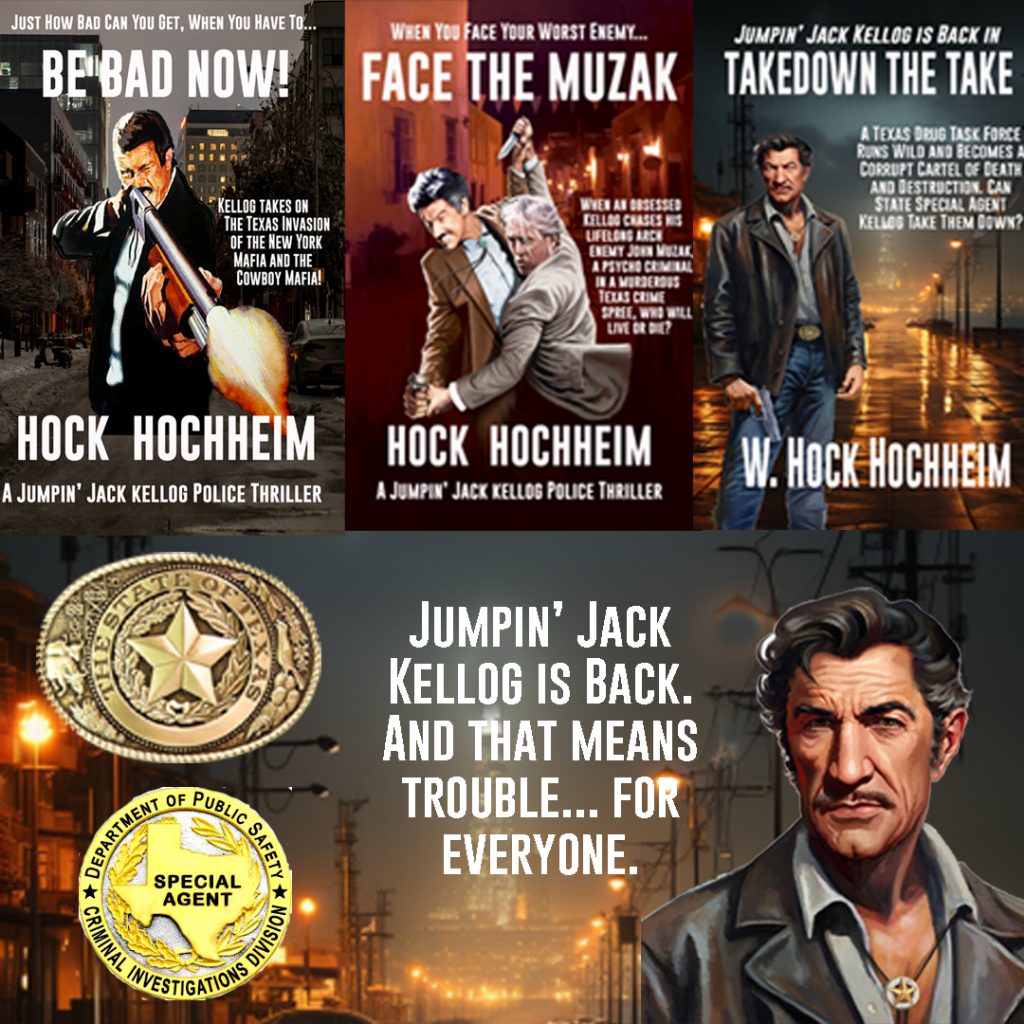
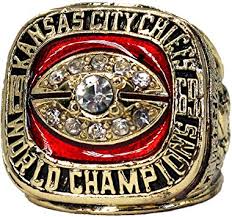

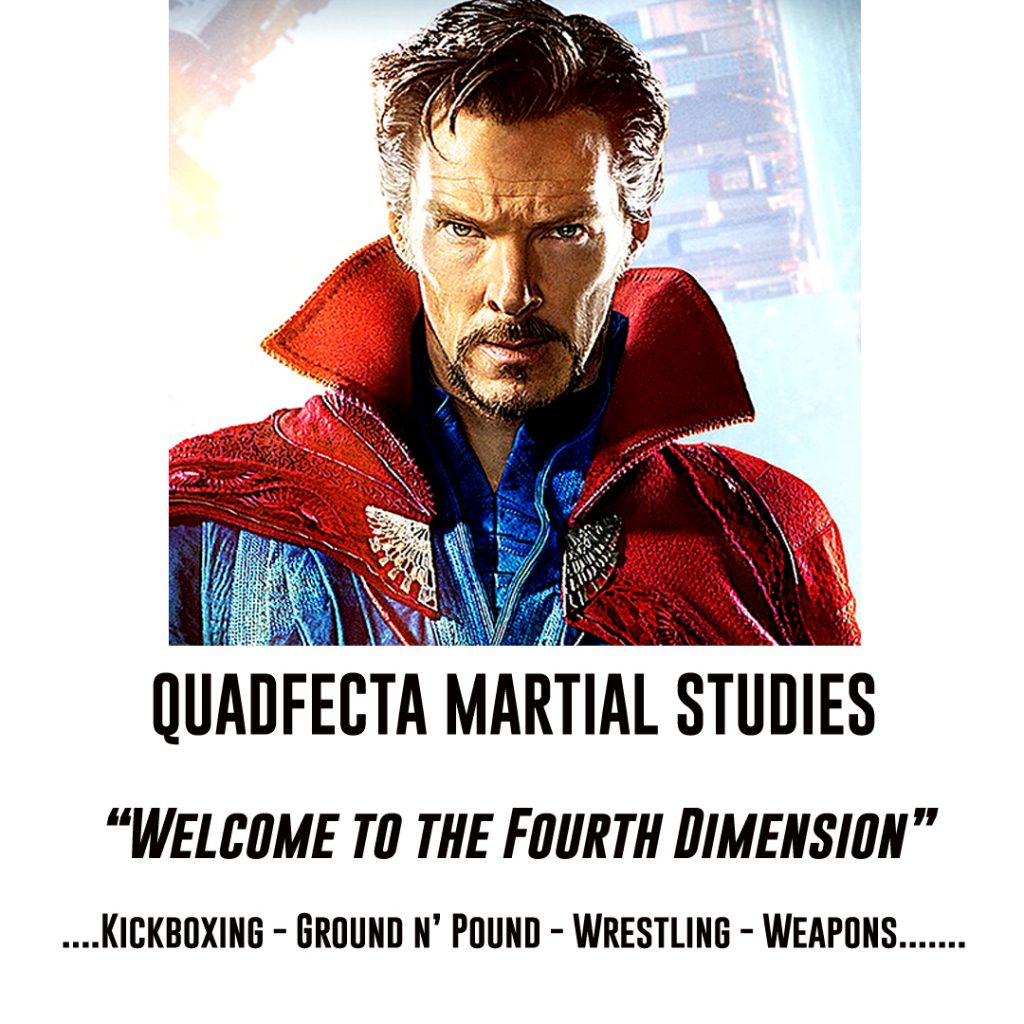
We’ve already discussed what person, what trainer-instructor to choose back in the WHO segment. What subjects of training taught by this person should be prioritized. If you are skipping sports and arts as I have done long ago, hopefully you will find a dedicated, generic, “clean” combatives instructor.
Watch these full hour free training films, click here
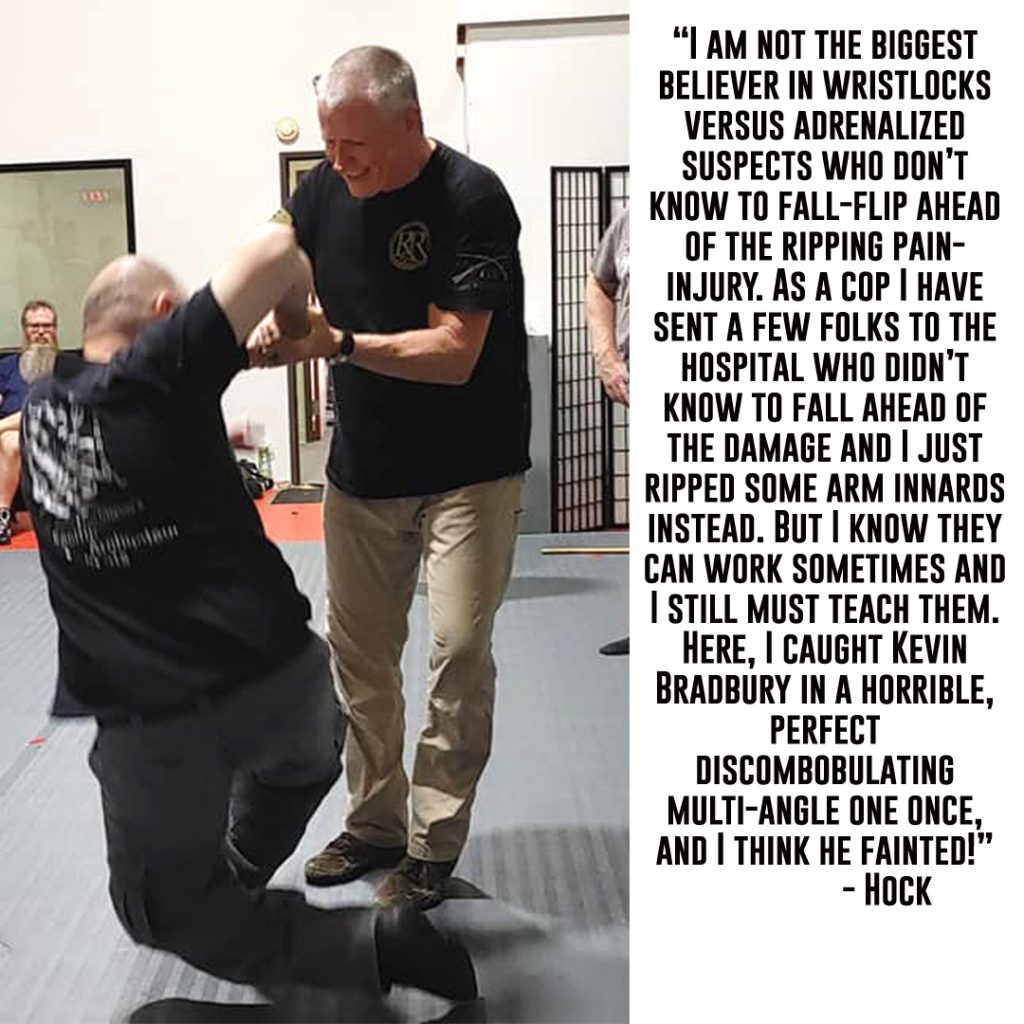

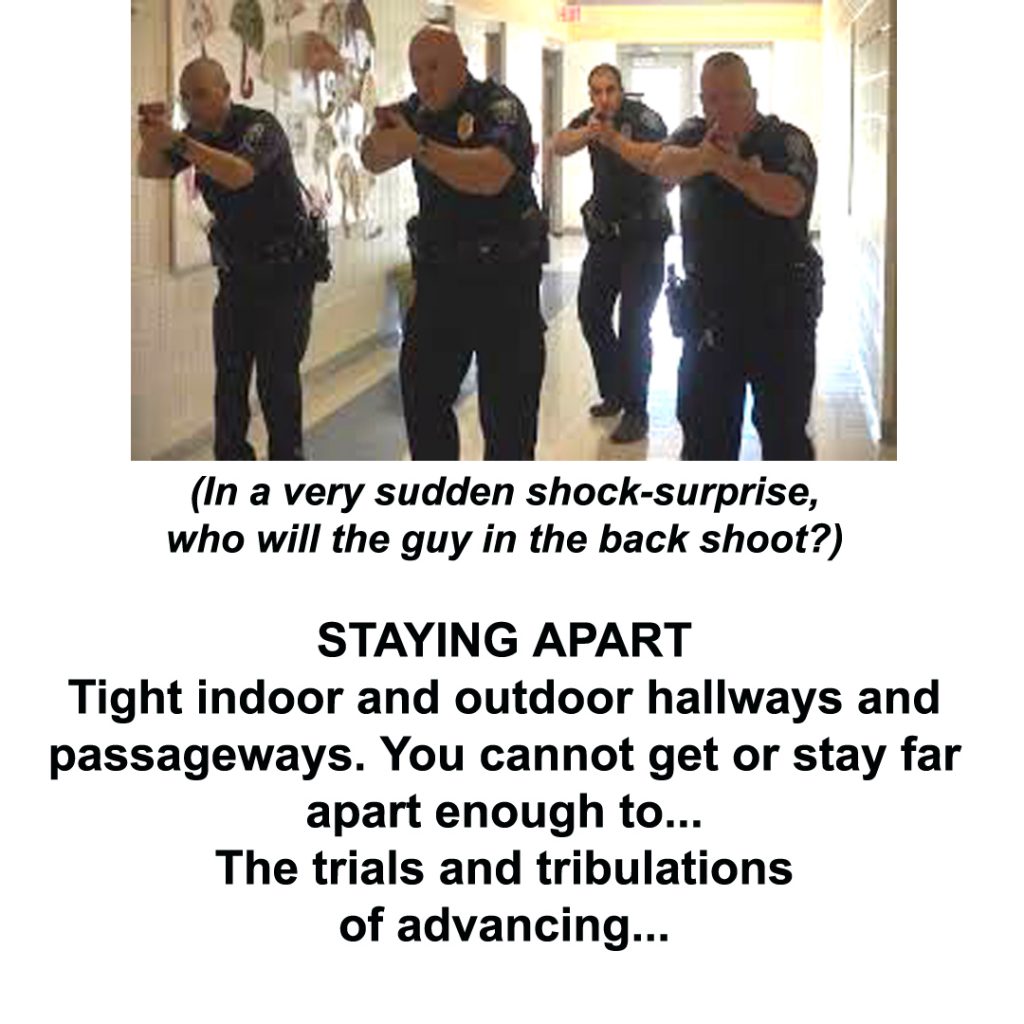
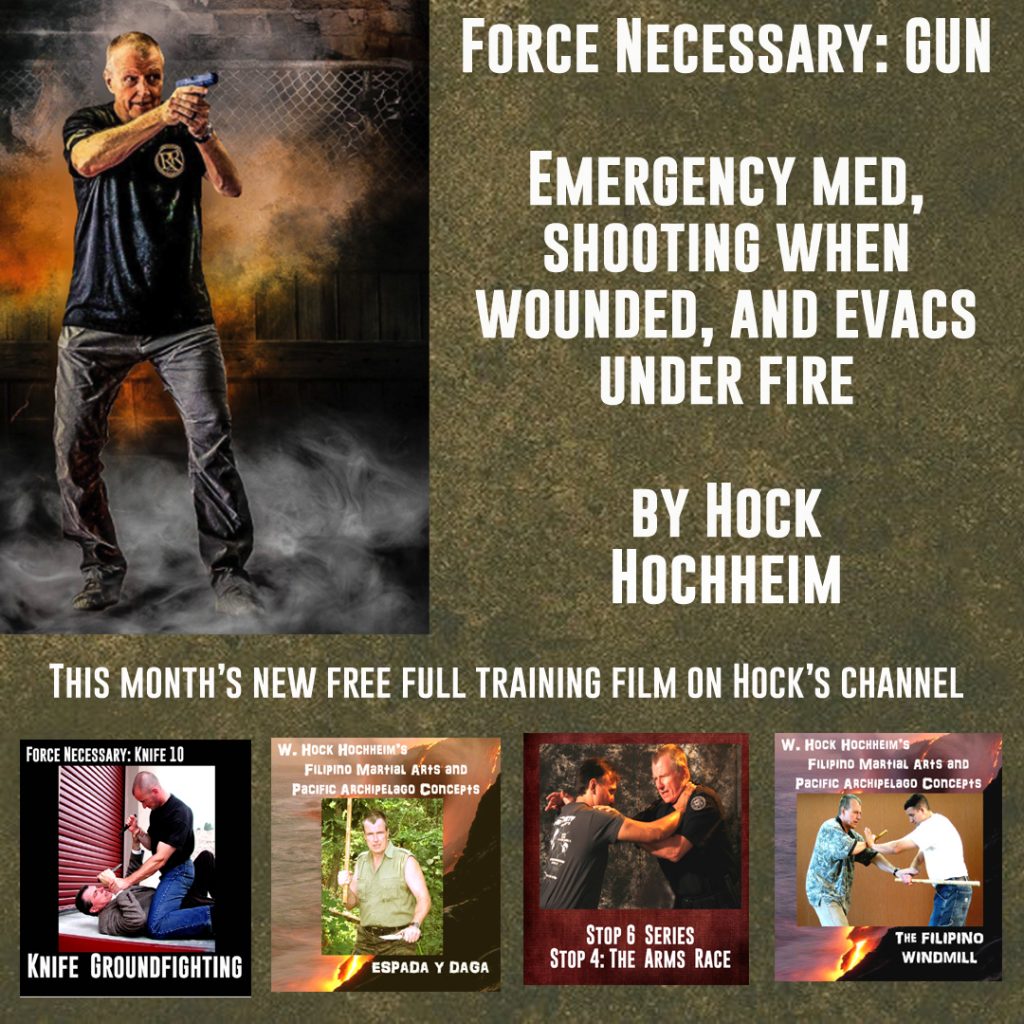
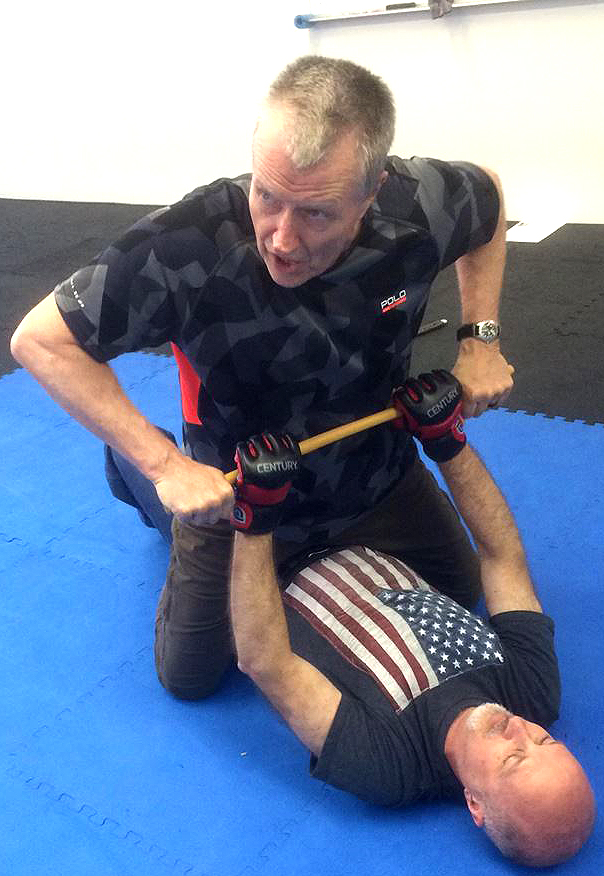
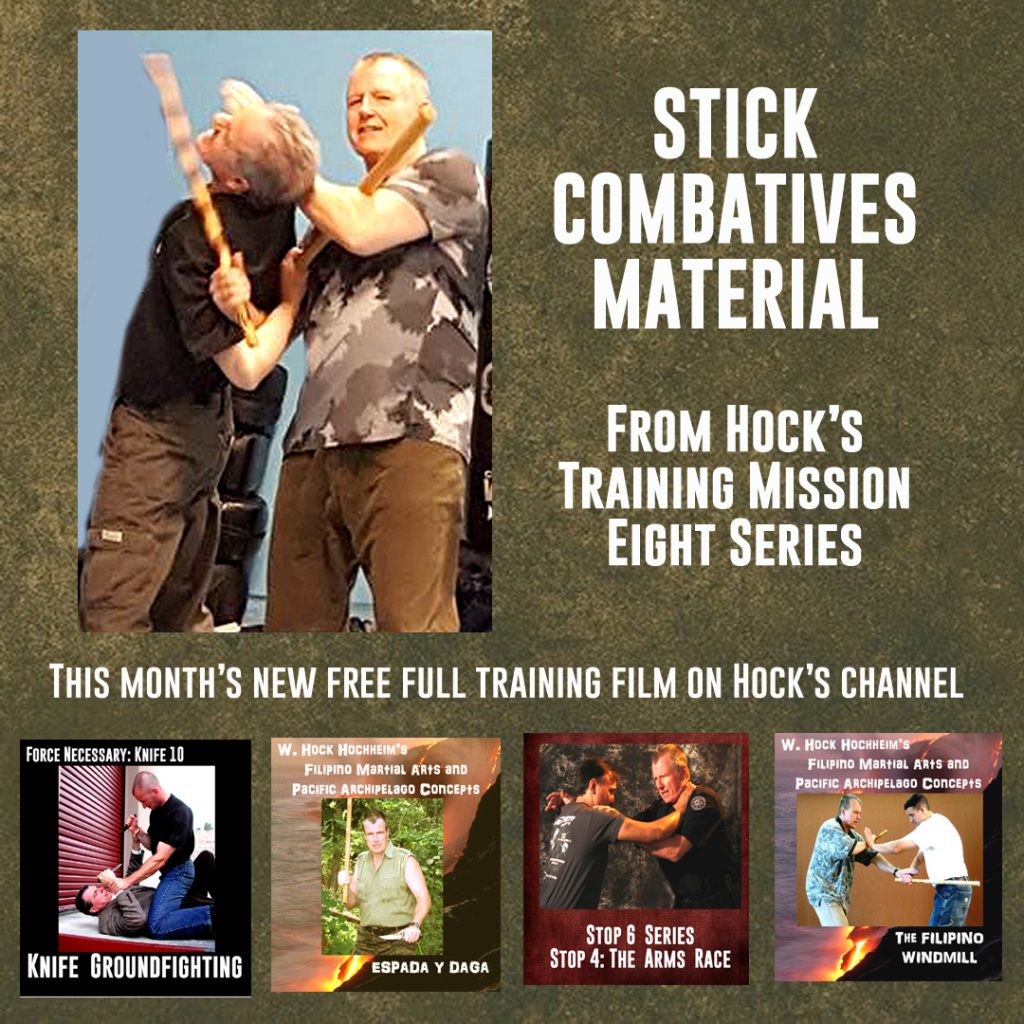
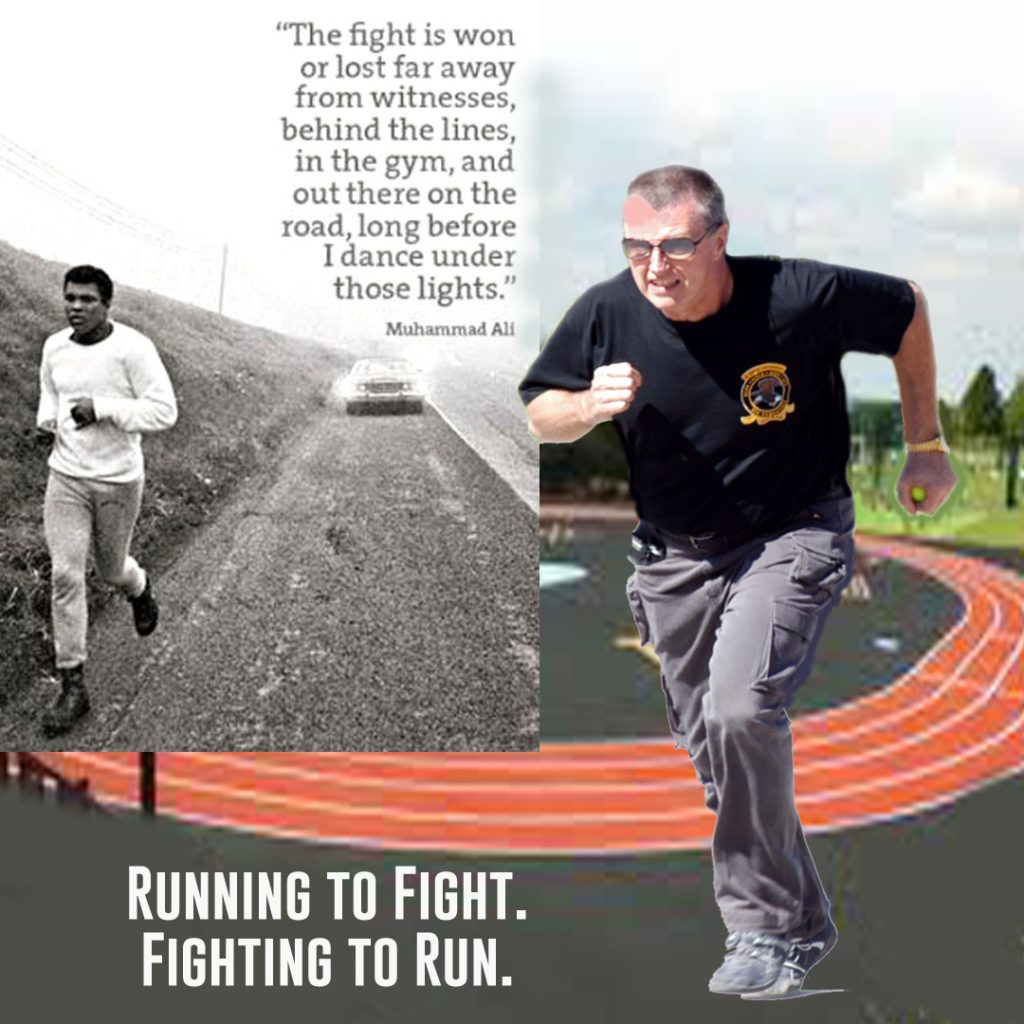
 I find this more multi-lap-to-a-mile handy because I change “themes” on each lap and easily remember to do so. I don’t think I have the time and the mojo to do my whole workout listed below, changing themes every classic quarter mile on the big boy track. If you did one of these chores as one full lap, and four laps make for a mile…it would be a long (and exhausting) many-mile day.
I find this more multi-lap-to-a-mile handy because I change “themes” on each lap and easily remember to do so. I don’t think I have the time and the mojo to do my whole workout listed below, changing themes every classic quarter mile on the big boy track. If you did one of these chores as one full lap, and four laps make for a mile…it would be a long (and exhausting) many-mile day.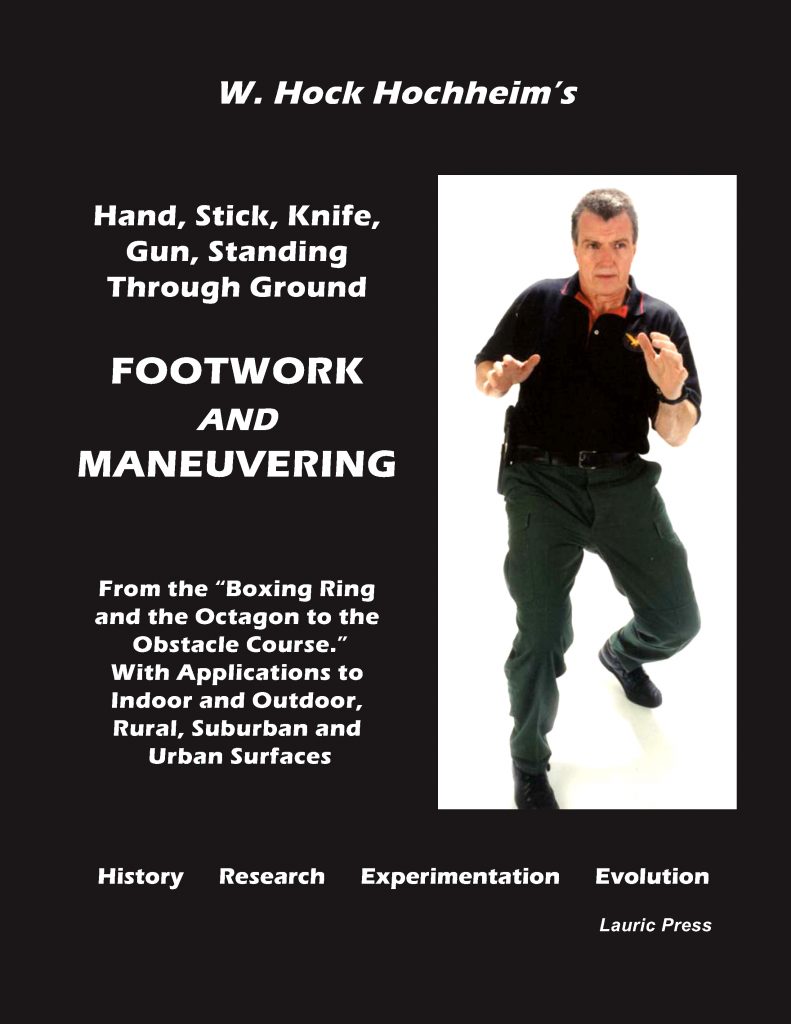
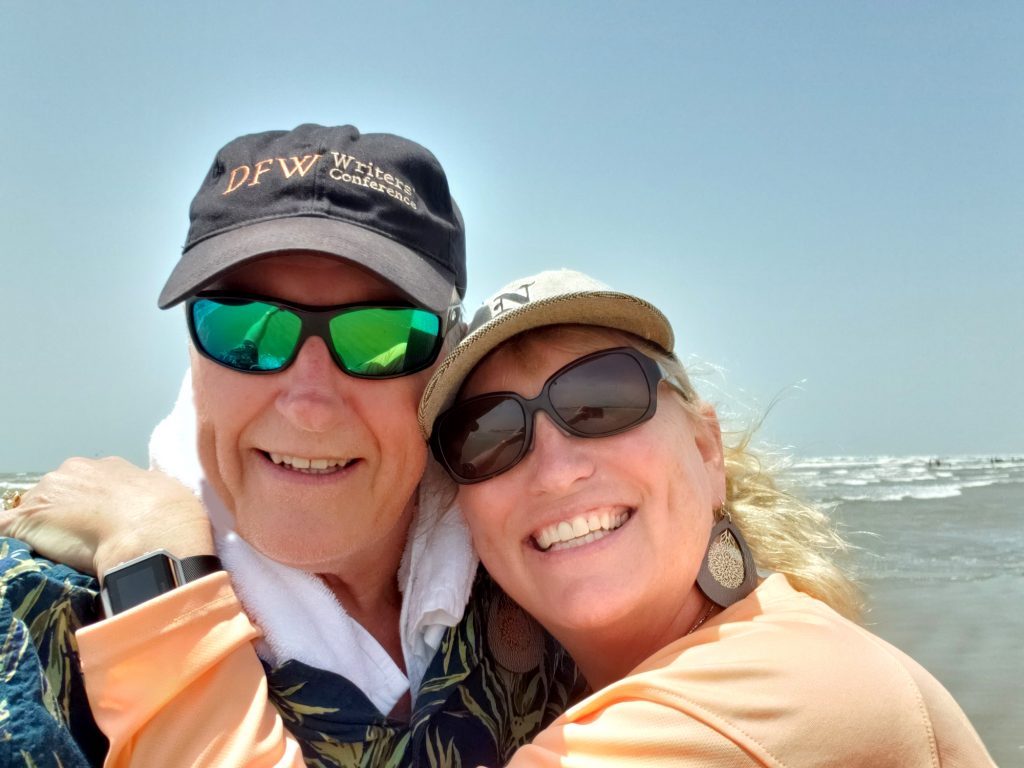
I have been in court a lot, military, state and federal, helping prosecutors win cases I brought forth, for three decades. I even worked for defense attorneys in the subsequent years as a private investigator. This process was an incredible legal education. I came to believe that the best patrol officers are former detectives. The best detectives are former prosecutors. The best prosecutors are former judges (especially appellate). Of course, this reverse engineering ladder of sorts, this learning curve is impossible to officially implement.
But, I feel lucky to at least have worked in these worlds. Back then, District Attorney Jerry Cobb and his top assistants were better than most investigation schools on what details gets convictions. (Two such great and dedicated staff minds were Alan Levy and Lee Gabriel.)
(Me atop the Denton County, Texas Court House, circa 1980s. In the distance is the original courthouse on the classic downtown square. )
The law makes you think about all things big and small. The who, what, where, when, how and why. A police officer asks those questions for the crime report. The detective digs deeper. In the grand jury and trial stage we must dig even deep – deeper because you never what what tiny problem might arise in court.
Law school should export critical thinkers. All lawyers should be critical thinkers. They are often not. But they should be. I know lawyers who are doffusses and some think like criminals.
Juries and Jurors: And Lord knows common jurors… your wonderful peers… have no training in critical thinking. It’s the pot luck, roulette wheel of your freedom and fortune.
When I was an investigator in the US Army and in those court martials, the juries consisted of officers, usually college grads. No guarantee of critical thinking, but on paper at least they appear probably smarter than civilian “Joe-Shit-The-Rag-Man,” juror, often was-is someone who was never taught civics in school, the law or government or unbiased history. Often was-is someone that when questioned think Abe Lincoln was the first president. Often someone who failed to avoid jury duty and sometimes even fall asleep in the jury box. (Oh yes, I could tell you stories – well, I have, in my book below, actually. Judges are supposed to “wake up” jurors. Naps never happens in military tribunals. Oh no. And in federal court the judges are VERY powerful and sleepers are awakened by “thunderbolts” from the bench. But in state and county courts, not always. To counter the snoozers, I would sometimes fake a loud sneeze into the microphone when testifying and coming to a vital speech point. I would watch the nappers’ heads bolt up. I would wait a few seconds for them to come to their senses. Everyone in the court knew what I was doing, but it was a Oscar-level, sneeze performance with which I could contest any objections.)
One of the many things I learned that for the colonel, the scientist or the carpet-layer to totally draw conclusions, they need to hear and analyze total evidence. Thus…the “Total Evidence theory.”
“There’s a crucial principle in probabilistic reasoning known as the ‘total evidence requirement’. This is roughly the principle that we should always use the most specific evidence available to us. Suppose the prosecution tells the jury that the accused always carries a knife around with him, neglecting to add that the knife in question is a butter knife. The prosecution has not lied to the jury, but it has misled them by giving them generic information – that the accused carries a knife – when it could have given them more specific information – that the accused carries a butter knife. In other words, the prosecution has violated the total evidence requirement.” – Phillip Goff is professor in philosophy at Durham University, UK. Writing in Aeon Magazine
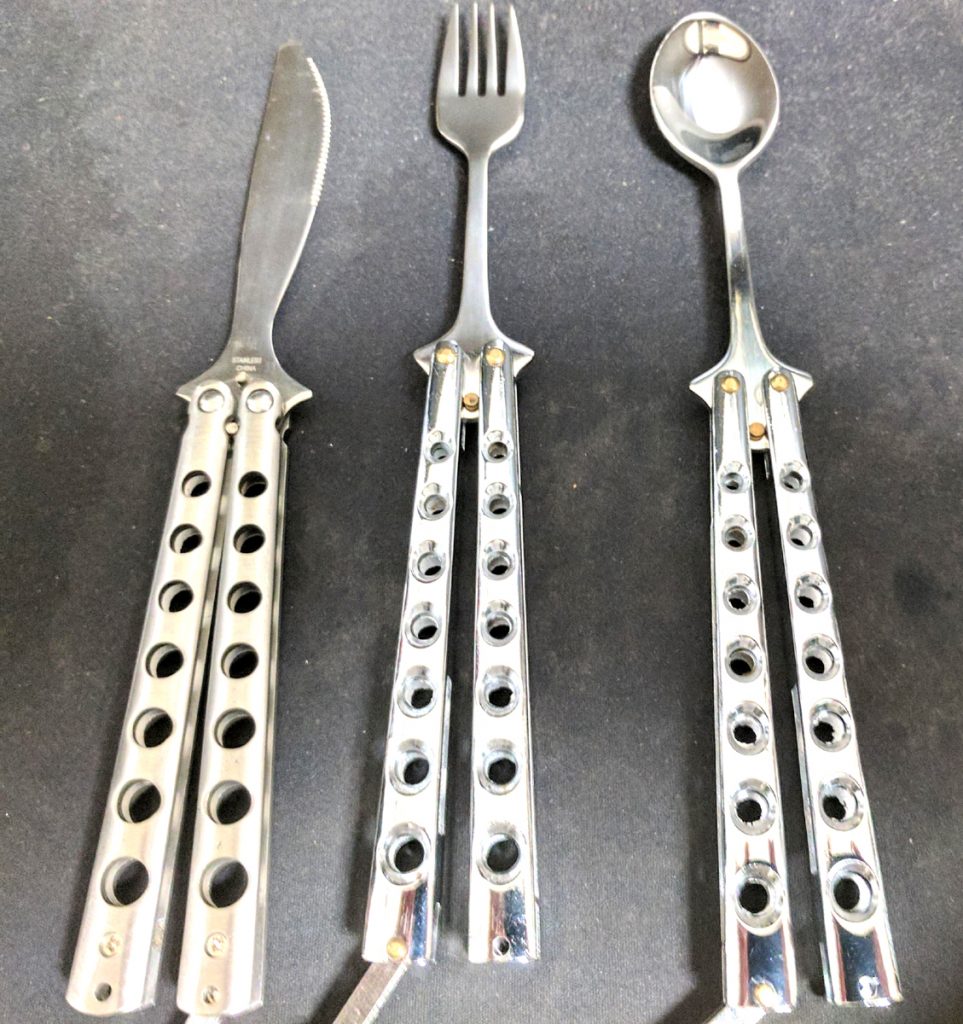
(My book covers much police action and many issues like this. The title was invented by the publisher and not my choice. When you sell a book, titular things like this are out of your control. Ebook or paperback. Click here. )
Kajukenbo Okayama: Hoch, tell us about yourself.
Hock Hochheim: Well, that’s sort of the “Who, when, what, where, why” that I use everywhere. And I do ask that question…“Who?” “Who are you, really?” And in our business, who do you really expect to fight? There’s a psychology where older people think less of themselves, and then younger people think more of themselves, in terms of what they think they can do, and who they can fight and win against. This is so true that there are actual psychological terms for both of those categories, but they escape me now. I have to continually look them up every couple of years to remind myself.
But I’m just a former army, military, police investigator. Then Texas police, and in most of that time, in those 23 years, a detective, about 16 or 17 years of that. And since 1972, starting out at Ed Parker Kenpo-Karate, I’ve been a martial artist, other than a few rare years maybe, while in the army. I’ve just done this every day for…I think the number now is pretty much 50 years, 51 years… Fifty years, fifty-one years of thinking about/worrying about/being psychologically obsessed with these elements of fighting. To a fault, I think. I think it’s a bit of a mental sickness.
KO: (Laughing)
HH: I should be thinking about other things. Which I do, yes. I think about writing my novels, but also my mind wanders back to organizing this martial material…what’s better, what we can cut out, what we absolutely need. And in the terms of hand, stick, knife, gun, war and crime, it’s quite a challenge. It’s still a daily challenge, after all these years.
KO: Tell us more about your martial arts history.
HH: I was in Kenpo-Karate, I guess about a year, and then I went to the army. So, I had this established impression of martial arts. In the army, there was just a couple opportunities to train. Boxing. Police Judo. First of all, I was in Korea, and I wasted my time there, martial arts speaking. I say I wasted my martial arts time there because…I hate to use the word “brainwashed”…but I was so immersed in the idealism of parker Kenpo, and how superior it was, as they told us, that I really did not want do anything else. Now, I should have done Hapkido at least while I was in Korea. I’m not really a big fan of Tae Kwon Do, I like their power kicks, but gosh, I could have done Hapkido! We had opportunities. There were a couple ROK Marines there teaching military combatives classes at another base gym, So I did that.
The military police academy was kind of big on boxing as a support system, which also had its inherent problems. But since I was in Karate, as soon as I got there, I did their boxing stuff. And it’s very hard to take sports boxing with gloves and transform it into bareknuckle fighting and reality arrests. There’re real problems with trying to make those two come together.
And so, anyway, then I got out of the Army, I did Karate and Jiu-jitsu back in Texas…the stand-up, old school Jiu-jitsu. And then, in 1986, I started in with the Jeet Kune Do people. And that was just a big mind explosion. I was very happy to get out of the classical framework, as suggested by Bruce Lee.
So, we’re talking Dan Inosanto and his top instructors. Thai boxing, the Filipino martial arts, Jeet Kune Do, Wing Chun…all the things that they were doing was just a massive amount of cool investigative stuff. And that went on, probably, I guess, until about 1997. Oh, and then of course I picked up with Ernesto and Remy Presas. And that was a huge chunk of time. I got very close to both brothers. They often stayed at my house, which was a fantastic opportunity for me.
I lived in middle of the country, and they needed to stay weekdays somewhere between their weekend seminars, and I was a bachelor, and they just flat out asked me: “Hock, can I stay, you know, Tuesday through Thursday?” Or, “Monday through Friday morning?”
Then about ’97 I really decided to get free of everything, and clear my head, and create exactly what I dreamed of. Y’know, all these decades, I was in the pursuit of the “perfect martial art,” so to speak. Survival fighting with hand, stick, knife and gun in crime and war, standing through the ground. And after I’d done all of these things, I realized there was none. No one perfect thing.
And so I decided to embark on this blend…I guess the best word is “combatives.” A word that wasn’t popular in the ’90s, but I picked that word anyway. It became popular later, to a shaky extent.
KO: Before you got into Jeet Kune Do, I hear you had a run in with Kajukenbo?
HH: Yeah. So, in Ed Parker Kenpo Karate, North Central Texas…which was one of the rarest of official martial arts schools you’re gonna find back in the late 1960s and early 70s. I found one and joined. We had two private lessons a week, and Saturdays was set aside for a group lesson. A couple of hours, and that was your typical group martial arts class in many ways. And at the end of the Saturday session, they had organized…Keith See was the guy, one of the first generation Parker guys…they had organized a sort of open, sparring class with as many other schools as you could find at the time. There was Tae Kwon Do, there was Kung Fu, there were various arts. And since part of Parker Kenpo was very kickboxing oriented, we usually sort of “won-beat” everything against these other people.
It just created a “wow” factor, like some of these folks were really dramatically moving into artsy, unsafe positions (as taught by their arts), and we’re just kickboxing at this point. Not good for them. We were always very friendly. There weren’t any kind of feud problems.
But then all of a sudden, who shows up one of these Saturdays in 1972, but the local, Kajukenbo guys. And all of a sudden, they were like us. They were a mixed kickboxing outfit. And so “Wow!” we said. And so no, we did not overcome them. And y’know, it was very much an equal experience. “These guys are like us! They’re from Hawaii, they’re doing the same things…” So that was my first introduction to Kajukenbo, and these guys. And, as time marches on, we’re all going to seminars, and we get to know each other and stuff. And then of course a long time ago, early 1990s I met Dean Goldade, he was a Professor Gaylord black belt. We worked consistently together for decades. I also got close with another Prof Gaylord guy, great guy, Ron Esteller. I have done dozens of seminars at his place over the years. I’ve done a seminar with Prof. Gaylord in California, so I know all these guys, and it’s just been a gigantic friendship ever since.
KO: What was it like in the martial arts world when you first started?
HH: Those guys were super tough. I joined…I started, in 1972, just after the blood and guts era of Karate training. It was sort of an assumption that this old martial arts training style could not be a successful business, if you have to vomit or bleed every Tuesday 
I saw the same thing happen to Thai boxing. In, oh I guess about, the late ’80s or early ’90s, where suddenly you were not beating the snot out of each other all the time in class. Before that there were just constant injuries, and business problems with that. And of course Bruce Lee had this same problem at his YMCA classes in Los Angeles, which is why he created that YMCA boxing program, which Tim Tackett taught me. There’s a lot of great, hardcore, application drills in that program. It meant that James Coburn didn’t have a black eye when he went to the movie set. And the doctors and the lawyers training with Bruce, y’know, weren’t all busted up.
So, he created this kind of program that was focus-mitt oriented…and you’ve seen bits and pieces of it in the Jeet Kune Do world through time. The little sets of things, strike/counter-strike, sets of three, sets of four…I still use those. But my mission is not to create a boxer or a kickboxer. My mission is to create a bare-knuckle, self-defense endeavor. So, I still use a lot of that Bruce Lee YMCA program.
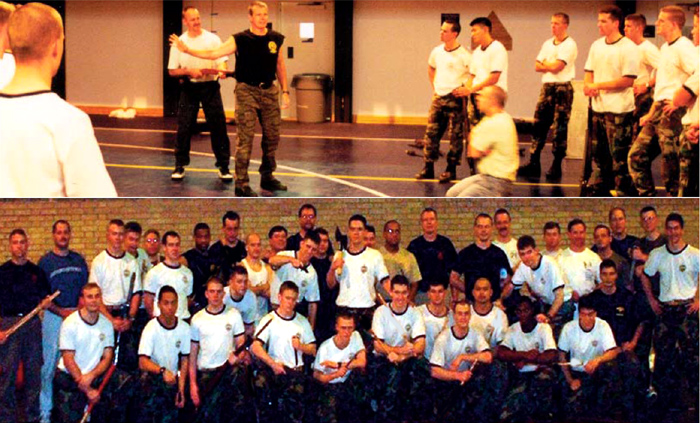
KO: Tell us more about that program.
HH: Well, everything is called “Force Necessary”. It’s based on using only that force necessary to win and survive. The definition of “winning” is different situationally and personally. I have a couple of rules about what a fight is. “Checkers, not chess” is a motto of ours, and defining what you don’t do, helps you define what you do do. Defining what you don’t wanna’ do helps you define what you wanna’ do.
Is a fight “chess” or is it “checkers”? I believe a real fight under stress is checkers for almost all people. I mean, look at the limited list of techniques you see in the UFC. So I have an internal meter in my head that can spot the chess applications. Einstein said, “Keep it simple but not too simple.” But the definition of simplicity changes with people. So, if you have a super talented martial artist, you should remember that their definition of simple, or “checkers,” is higher than the average person.
Trying to keep things simple and as realistic as possible, in the hand, stick, knife, gun realm, that is really core, essential stuff.
I am not going to create champion kickboxers. Or champion MMA people. Or champion BJJ people. And in actuality, a lot of those people that do advertise they create those champions…they don’t really create champions anyway. Y’know, they just have a program, and they do the best they can with it.
My goal is to create self defense people. And again, there’s of course that large middle realm of “normal” people. But then of course if you have a special athlete in there, you have to make sure you hit their level of simplicity, which is higher.
I can look at people and just decide what they need to work on. For example, here’s one example, I’ve tried to look into the subject matter of the density and size of fists. You can look at a person and say “You shouldn’t be punching people, because look at how tiny your fists are. Switch to palm strikes.” And then I have another friend who’s got fists like cinder blocks. And he needs to be punching everybody.
I just ran across this in Hungary last week, in Budapest. A kid wants to pursue all this information. And I can look at him and say “You need to take a couple studies of, like, how Bruce Lee moved. Because you’re small, you’re thin…ya’ know, you look like him. What’s your arm length?” Etc. “But you, Mr. Tank standing next to the kid, at 280 pounds, you should develop your own “bruiser” approach to this.
I can tell you many great stories. I mean, Dan Inosanto said in a seminar once, decades ago…and he was a high school football running back champion…he was getting the ball, and crashing into the line…and his coach said “Dan, why are you running into people all the time?”
So, he named somebody famous, but it was a giant running back…and Dan said “Well, I’m trying to be like my hero ‘Joe Blow’ (whatever his name was). And the coach says “Dan, Joe Blow is 6’4. You’re 5’ 7”. Pick…another…hero.”
And that’s a great piece of advice for people, so I try to keep everything in this system essentially “core” simple, and in the end it’s up to me and the people to make their own thing that works for them. And not try to pretend to be somebody else they can’t be. It’s the “who” question again. “Who are you, really?”
And then of course you come around to the subject matter of instructors. As an instructor, despite your shape and size or shape, an instructor must know everything. Because he or she is now in front of all shapes and sizes, and ages, and strengths. So there’s the question, is your guy, the attendee, someone who wants to defend themselves, or do they also someday want to be an instructor? Well, the instructor has to learn everything. Two-fold responsibility.
KO: Tell us more about your view on teaching punching in your system.
HH: Well, punching is cavalierly taught in martial arts without any warnings. The big problem is the “bicycle helmet” area of the head. That’s the real hand breaker. Because the jaw gives, the neck kinda’ gives, and you have some chance of surviving that without injury. But when the bad guy reflexively lowers his head…you’re aiming for the nose, you instead hit the bicycle helmet part of the skull…you’ve got a broken hand. Or say, versus a hook punch, they turn their head sideways and down, and you got the split knuckles break.
So that’s why punching is level 5 in our empty hand module, of the 9 training levels, because I think it’s taught way too cavalierly in almost all martial arts. I mean, in those schools you’re punching on day 1 and no one is telling you this could be bad for your hand and how to avoid problems. What about a palm strike instead?
I’m a puncher from day one, and my hands are not that small. And I’ve only had two real problems and one surgery, with a hairline fractured bone because of an uppercut to a jaw.
KO: How does knife/gun/stick fit into the world of martial arts?
HH: Well, I guess it doesn’t in unarmed systems. But it should. It has been connected, if you think back to the samurai. They were shooting guns at each other eventually. Because the human race, psychologically, has been built to kill from a distance. This has been proven and proven and discussed forever. Archery was the big deal way back when, and then guns. And it’s just harder, face to face close, to kill a person. Just, psychologically.
So, today, there are a lot of guns. I don’t teach marksmanship at all. I have interactive/simulated ammo shooting training. In situations. That’s all I teach.
And of course the real challenge is to shoot cold, meaning that you are suddenly attacked…at that point, what is your skill level shooting cold instead of your skill level on the fourth set-round, warmed up on the range…and they say even psychologically, preparing yourself to drive to the range…getting everything ready to go, driving there, entering the place…all results in you not being all that “cold”. All of that is starting to prep you to shoot. Warming you up. Instead of being ambushed. And being ambushed is the greatest trick of all to pull off.
So I try to have situations that are based on reality. And I have very safe, fake guns, and very safe ammo, and we are able to work through many repetitions of realistic problems. You’re not learning gun combatives unless moving, thinking people are shooting back at you. It’s just that simple.
Of course, this approach has been accepted now, by the military and policing, and some smart civilian courses. I started to do this in the 1990s, and people were hesitant about it, thinking the only solution was – “I just need to draw faster” and stuff, and now as time has marched on, anybody with any sense is exploring interactive shooting with simulated rounds.
And of course, everyone’s been fighting with some kind of impact weapon or sword, but I don’t know if these things are officially, classically, “martial arts”.
KO: How did being a police officer connect with all your training?
HH: Well, for one thing, I didn’t shoot a lot of people. Cause I could fight ’em. That was a big deal. There were circumstances where I could have easily, legally, shot somebody, and I knew I didn’t have to. And so, I didn’t. And that’s from all this training and realistic confidence. Of course, that was not popular at the police department, because it set a new standard for these other people.
I do know from the reaction of people that that was kind of a problem. I’d bring a guy in, handcuffed, that I could have shot, and some old timer would be at the police department smoking a cigarette…and he’d say “Why didn’t you just shoot that son of a bitch…?”
And I would simply say “I didn’t have to. I didn’t have to shoot him”.
So that was the biggest thing. My days, the ’70s, the ’80s, and the ’90s,…basically speaking, if you were toe-to-toe, face-to-face with a guy, and a fight really started, we would basically, legally, try to beat the shit out of them until he quit resisting. You can’t do that anymore.
Because here’s the deal…if you arrest someone and wrestle with them…which is extremely dangerous, especially on the ground…and you get them in a “submissions/tap out” hold…they’re not gonna’ tap out, because in most cases they don’t know how to tap out. But you’ve captured them. Because I’m telling you, when you let the guy go, he continues to fight. Or he runs away.
So the goal of submission wrestling in arresting people is really not good. Now, if two or three people show up…your partners…you can try to work that out…and it’s usually still an uncoordinated mess.
And I’m a big fan of catch wrestling. Because as a martialist, we must know everything about the body. And we must know every joint, which way they bend, and which way they don’t bend. It’s our responsibility to know that. That doesn’t mean I have to become a brainwashed wrestler. Judo people forget to punch. If you’re in a system that doesn’t have a complete, competent doctrine, huge chunks are out. And if you exist in that system for too long, you forget many important things.
The old school fighting ways were: you hit the guy, stun the guy, throw him down. And handcuff him. That simple formula did help me tremendously in policework.
Nowadays, it’s a whole different animal.
KO: How about the stick part of your program?
HH: I approach the knife, the gun, the stick, and the empty hand in the same way. In stick training though, if you remove the Filipino stick vs. stick fighting, there’s not a whole lot left to the stick study. A regular person is not going to be fighting with a 28 inch stick by happenstance. By happenstance, you’re standing on a street corner with a 28 inch stick, and you get into a problem with another guy who has a 28 inch stick? Not likely. At the stick versus stick part, that point the stick fighting becomes more of an art, more of a fun, abstract study, a hobby, and a martial art.
If you remove stick vs. stick fighting from the program, there’s not a whole lot of material. So, I work on that for the Force Necessary Impact Weapon: Stick course, we worry about self-defense survival. A little dueling, yes, but not at all like a Filipino course.
KO: And yet you seem to have a strong interest in the stick.
HH: Well, I started with the Inosanto world in 1986. Like so many people, Dan Inosanto changed my life. With the things that he was doing, and the people that he had. I spent a lot of time with Terry Gibson in Tulsa, Oklahoma, who Inosanto said was one of his top five people. I hosted Terry, I went to his house, I went to the seminars they did up there. I met Paul Vunak, Larry Hartsell, all through Terry Gibson. But part of the whole thing with Arnis is the overabundance of stick work, of single stick work.
As Ernesto Presas would explain, you really have five areas of so-called “play” in Filipino martial arts. There’s
So, sticks appear in three of those. Just naturally there’s an overabundance of it. Espada y daga is “sword” and daga, but it’s become “stick”, mostly. Some people justifiably call it “stick and knife”.
I myself am not particularly obsessed with sticks, ya ’know. I just have a long accumulated knowledge of stick stuff. And I have a world where customers want to see “stick” stuff. They are magically so interested in it. So, I am happy to do stick material, and it’s kind of fun and so on, but it’s not my main interest or thing to do.
And I’m amazed…I see these people that have weekend seminars, three-day seminars…single stick, seven hours each day. Wow! And they’re just hypnotized, and mesmerized, by stick versus stick. These people really love it.
And as a result of that, I am happy to do stick stuff. And frankly, I do know a lot about it. And Filipino martial. I’ve had lots of exposure, time and grade. Dan Inosanto, at first he was doing Pekiti Tirsia, and then he switched over to Lameco…and in the meantime, he’s still telling you what Johnny Lacoste did, what Serada does, and Illustrisimo…
I was exposed to all these different systems, and I started going to all these others with an open mind. I started going to Remy Presas seminars. Remy was charismatic, he was the real deal…he fought in the Philippines, and had killed people, in stick challenges, that’s not very well known, but I’ve written about it on my pages. So, I was going seminar to seminar. I was just a seminar attendee to him. And then some guy calls me over and says “Do you know about his brother, Ernesto?”
I said, “Never heard of him.”
And so, he said “Well, come back here behind this curtain.” And we started to do Ernesto material, and then I started to do Ernesto material for four years. As well as all the Inosanto material. As well as Remy material.
Then I get a phone call from my guy, and he says “I’m going to the Philippines for a month. You gotta go with me.” So, I’m thinking, I have hundreds of hours of comp time saved up as a detective. And you have to take that time after a while. So I said, “I’m in.” I’m a bachelor, I sold my car, we went. And there was only like 7 or 8 of us that went. It was great. Negros Island and in Manila.
The next thing you know, after about training in the Ernesto system for five years…on the last day, a black belt test and I get this black belt “guru” title, there in Manila. I come back with this lineage and an actual list of system requirements to do that was really elusive with other FMA instructors. Most people just had to spend a whole lot of time (and money) with “Tuhon Joe Jones” and maybe…maybe…you’d get something. I had a list and a lineage line straight to Manila. I said “You do these ten things, and you can get this belt ranking from the Philippines.”
“WHAT?!” they’d say, “You mean these ten things?”
Yeah! I said “I can do that for ya. And if you do these 25 things, you can be a basic instructor, as granted by Ernesto Presas in the Philippines.”
“WHAT?!”
So I started to become popular because I was, I had this connection. Back then, everybody wanted a backyard workout, a garage workout. Some guys rented a space. But everyone had a dream that was financially hard to do as time marches on. And that’s really how I became so-called “famous.” I started touring all over, people started asking me to these 10 things, to do these 12 things.
Meanwhile, I’m still with Remy Presas. Again, at those early times I was just another seminar attendee to Remy Presas, and Remy finds out I’ve been to his house on the Negros Island, that I’m working out in the Philippines, he contacts me. Then he and I became close. He knew I cared that much to do all those things. I hosted him numerous times and he stayed at my house a lot.
Both brothers had similar systems, but they’re different. Ernesto’s is much bigger. Ernesto was obsessed with making the perfect Filipino system, in those five areas of play. And as a result of that, he was tortured, and he never could complete it. He was constantly changing it, constantly messing around with it. Whereas Remy just wanted to do enough so that you could fight well, basically.
Both these guys were Karate black belts, they’re Judo black belts, they spent their entire lives doing martial arts. So. they were very well versed. They could fight anywhere, with anything.
But, back on the stick subject, as time marches on, the obsession with single stick with people is amazing.
So that is my…not a love/hate, but a love/infatuation with sticks.
KO: You’ve written quite a few books, right?
HH: Well, I have a very popular knife combatives book…
KO: (Thumbs up. I love that book.)
HH: …It’s got about 1,400 “how-to” photos. It’s very popular, it sells regularly, and now it’s an e-book.
Then I have an impact weapon book, which is not based on Filipino stick. But it is the blocking, striking, and grappling with an expandable baton, or any type of impact weapon that you have. I’m in the middle of making an unarmed combatives book, which is gonna be another heartbreaker to make…2,000-plus photographs, as much of my knowledge on the subject as possible I can record.
Then I have to do a Force Necessary: Gun” combatives book, which is nothing but all the sims ammo, interactive scenarios that I teach.
Those are the “big four”. The idea of writing a Filipino martial arts books is just overwhelming. I get a kick out of seeing these guys who write a “Filipino Martial Arts Book”, and it’s like a 128 page book. No (laughing), it’s gotta be as big as a damn spaceship manual. Now, I could do a five books on the five areas of play, that is digestible, possible. But y’know, I’m 70, I don’t know if I’ll get to finish ’em. And then of course, I do write novels, and I have a western series, and I have a detective series, and those take up a lot of my time.
KO: With modern technology, how important are books to the modern martial artist?
HH: Well, I guess that videos are superior, because you get to see what’s happening, but historically books are still important. They used to claim there were five ways to learn something, visually, reading, doing, etc. I don’t remember the others…but I’ve forgotten them because other experts have come up with five or more, better, ways to teach and learn. The original “five ways” is kind of an old school mythology that fell out of favor. I do know that you have to have different routes to people’s brains to teach them.
So, videos are pretty important. Sometimes I wish I had a GoPro I could plant, real thin, right between my eyes, and do what I’m doing and show people my (their) point of view, our perspective. And that would be another important way to learn.
But, for many, one of the main methods of learning is a book. And that’s why when I do these combat scenarios in books, I try to do each important step in the photos.
I’ve made about 45 training films. But with the demise of training films and the shortening attention span versions of films you see on YouTube…pretty much, the one-hour training video has lost the ability to be sold. Like Paladin, once a big international martial arts video company has collapsed. Century has bought the Panther videos but they don’t seem to be selling them. Nowadays, if you have an itch to learn…say…wrist locks, you type it in, you watch 17, three-minute YouTube videos on wristlocks, and you are sated. You’re not gonna’ buy a $40 wrist lock video. So, that is the problem with bothering to make movies anymore.
Of the 45 movies I’ve made, many are now free on my YouTube channel. I’ve decided once a month, I’m gonna put a 50-minute to 1 hour video up for free on my YouTube channel. Because of how things are changing. I don’t want the videos to sit and rot. If I was rich, I’d do all this for free anyway. That way at least people can watch and learn something.
KO: Are there any martial artists/martialists/fighters that you look/looked up to?
HH: Well, y’know, I really like Bas Rutten. I wish I could spend about year with that guy. But there are others that are competent fighters. I know that Bas will tend to lean toward the MMA/combatives thing, but he’s a pretty smart guy. Eric Paulson is amazing, the JKD guy. He’s amazing. He doesn’t seem to be hypnotized into wrestling. He knows the big picture. The information in the big picture is constantly on the tip of his tongue. You can always ask him “What about this? What about that?”
Gosh, and through the years, there’s been so many, but in particular categories. Scott Reitz. A founding member of LAPD SWAT…there’s your gun guy right there. Paul Howe, former Delta Force, gun guy, teaching in Nacogdoches, Texas. I guess I tend to lean towards extremely experienced people.
And then, some of the smartest people in the martial arts that you will ever meet, will run a quiet little school in a strip mall, in “Bumscrew”, Wisconsin. And nobody knows about them, but they’re brilliant people. And that’s just the way that it goes.
KO: What are your hopes for fight training, combatives, martial arts, etc. in the future?
HH: The bottom line is that I hope that everyone will be happy doing what they’re doing. Because much of it is a sport or a hobby.
The only thing that I ask for, that I ask and dream of, is that everybody who’s doing their hobbies and sports realize where it fits in survival. How does it fit in? Does it fit in? That’s one of the “who, when, what, where, why, and how” questions.
You have to have a martial IQ. The intelligence quota, to select the right things, and keep improving. If you wanna wrestle the rest of your life, and you still realize that this isn’t the cure for all fighting, and realize you don’t have a stick/gun/knife involved in this, and notice if you have forgotten how to punch and kick, “I just know this wrestling thing, and I love it! Maybe I will do a sports tournament thing someday, wouldn’t that be fun…”
Yeah. Go. Have a blast. Just know where everything fits or doesn’t fit. In the end, I want everybody to be happy with what they’re doing. They’re off the couch, they’re exercising, they’re part of the social aspects of a good school…you have Christmas parties, get togethers, you have kinship…all these great things can happen because of a martial art class, or a combatives class, or whatever. Just have an idea, from someone, somewhere, where your art fits in real life. And then, I’m happy. If you’re happy, I’m happy.
KO: Do you have any advice for martialists or Kajukenbo people in general?
HH: Well, Kajukenbo is, to me, a wide-open system of learning. They want you to exist in those categories and keep evolving and learning. And that to me is the best advice. Keep evolving and learning.
Hawaii was an amazing place, and a transition for so much.I remember Ed Parker saying that he tried to take all the Karate and Kenpo and turn it into an art for a bigger person. To Americanize it, so to speak. I think Kajukenbo did that too. And now it’s one of those martial arts that’s all over the world.
Back then there wasn’t a lot going on. And the arts there in Hawaii were the established beginnings of things. So, it doesn’t surprise me that a lot of guys were in those two arts (Kenpo and Kajukenbo). Nowadays, the popularity to me seems to be with BJJ and Krav Maga. You don’t see the Kung Fu school so often anymore.
To read more interviews like this, be sure to check out Kajukenbo Okayama’s recent book, “Blood, Sweat, and Bone: The Kajukenbo Philosophy.
https://www.amazon.com/stores/John–Hojlo